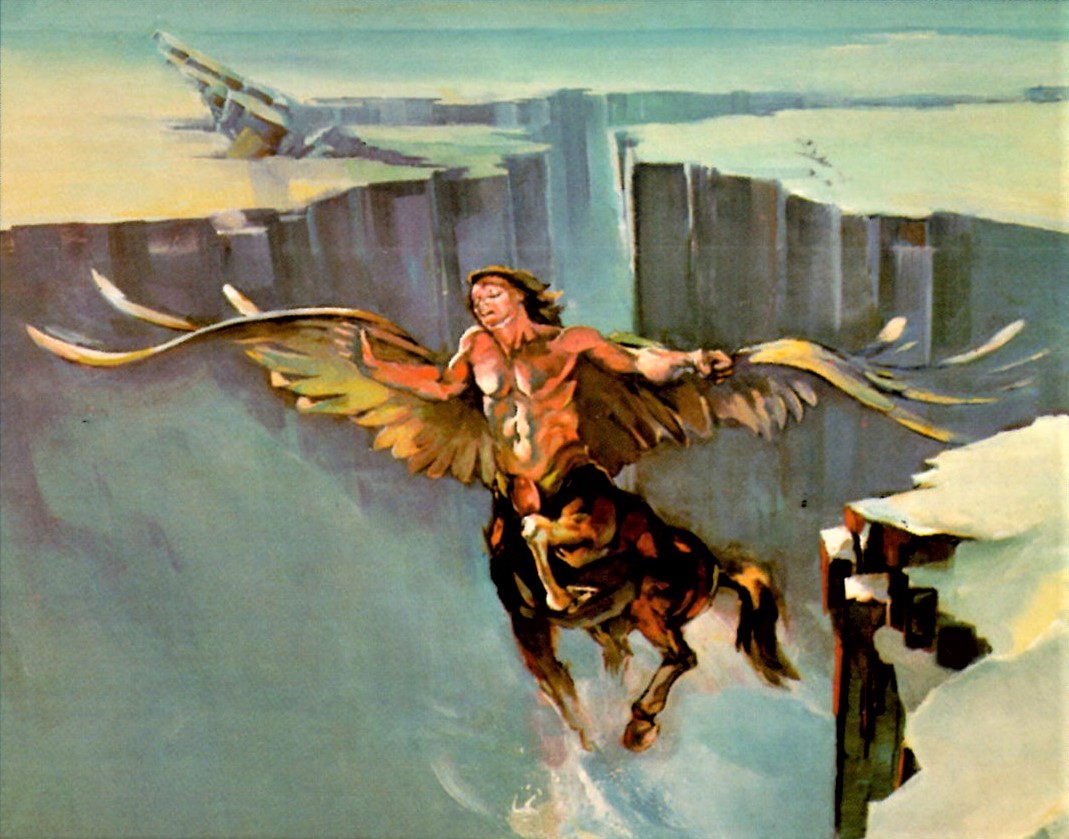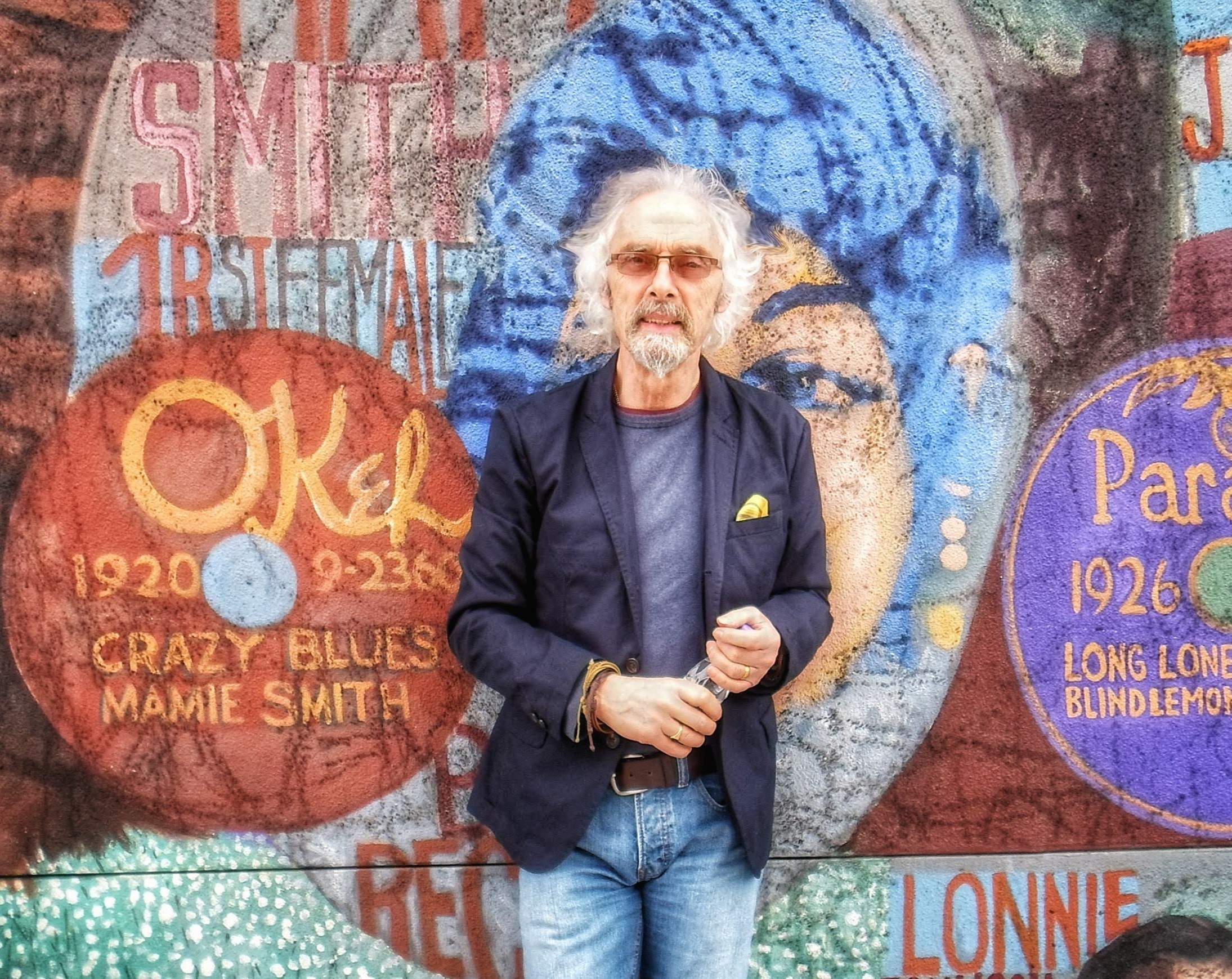Winterhawk | Interview | Jordan Macarus | “Hard Rock Monster from Chicago”
Winterhawk was a 70s hard rock band from the Chicago area that released a cult hard rock record, ‘Revival’ in 1982.
The band formed in the late ’70s thanks to its undisputed leader Jordan Macarus (guitar). The band performed live in Chicago and the surrounding area and recorded a live album in 1978 that would not be released for many years. In 1982 Macarus reassembled the group and managed to record ‘Revival’ before another breakup. ‘Revival’ is a selection of all the tracks that were played years before and contains a lot of insane riffs and solos.
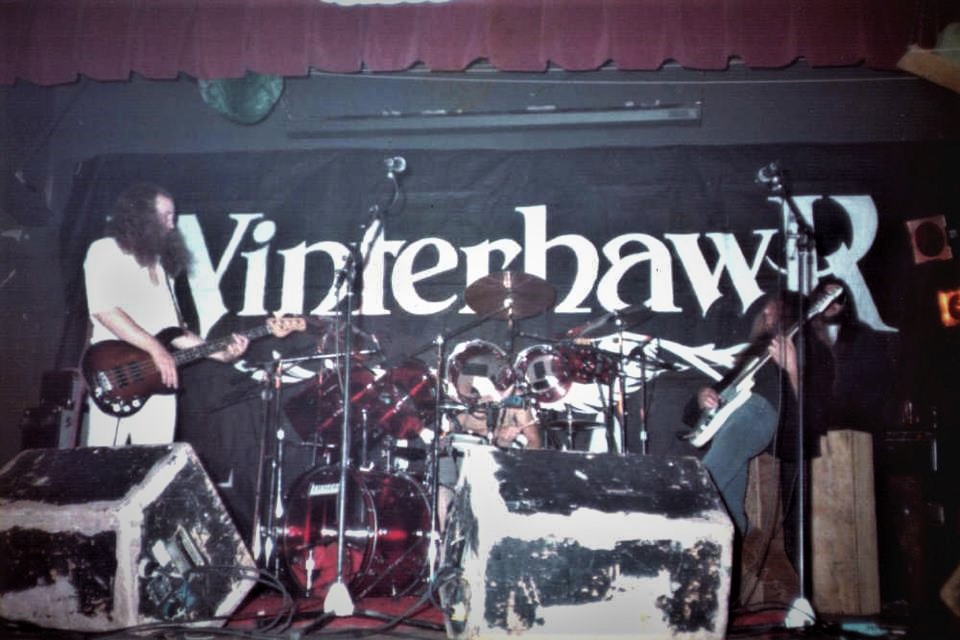
“We were firing on all cylinders”
Jordan Macarus: At some point, fairly early on in my musical experience; I left the pursuit of being a “pure guitar player,” in favor of writing from different instruments and perspectives, and trying to articulate my lyrical thoughts more clearly. Also driven by an early review of ‘Revival’ and Winterhawk, which was glowing about the band and the music, but noted that the “lyrical content was so banal, it dragged down some of the effort.” I kind of knew I was occasionally grabbing phrases just because they rhymed or had a familiar ring to them. I was more interested in the music, and we were writing pretty quickly too..
And for various reasons I think I wanted to write some “honest” music for “regular working people”. So, I’ve intentionally and unintentionally pursued making “an honest living” which may have kept me pretty honest and humble, and probably trapped as well at many times. (I’ve been driven for most of my life to “try to understand and address some fundamental problems with myself, and humanity”)
A relentless pursuit of the questions and potential answers regarding my own “psychosis” and life here on Earth are woven throughout much of my musical and “opinionated, yet scientific-journalism”: Your questions cover a lot of ground and I’ve needed chunks of time to answer them. Vicariously, it’s driven me to write the bulk of my life’s story. Which is also showing up as a generational tale:
My father’s father and mother came to the U.S. from Lithuania during WWI. Makaras was then “Americanized” to Macarus. I didn’t see my grandfather that often, but I loved Adam and Marie Macarus. I would learn much later that my grandma Marie had nearly died giving birth to my father, the younger of two boys. From that point on, Adam and Marie were not physically intimate… (A hundred years ago death during childbirth was not rare…).
At times, some of the tension in that house must have been palpable. My father told me that when he was eight years old lying in bed, he asked if God existed to give him a sign. And, from that point on he put his mind to taking care of himself and doing the best he could since God hadn’t answered him that night…
I started to realize about two decades after I started writing songs, that much of my writing was about my relationship with my parents, especially my father. In retrospect, ‘Period of Change’ and ‘Free to Live’ were more me speaking to myself and my parents than to my girlfriend at that time. The only person who has directly or indirectly inspired more music and lyrics than my father is my second and forever wife, Christine. We battled each other and our own psychosis for nearly twenty years before we got married. Definitely lament the tough times, but we’re significantly wiser and bonded into the forever. [1]
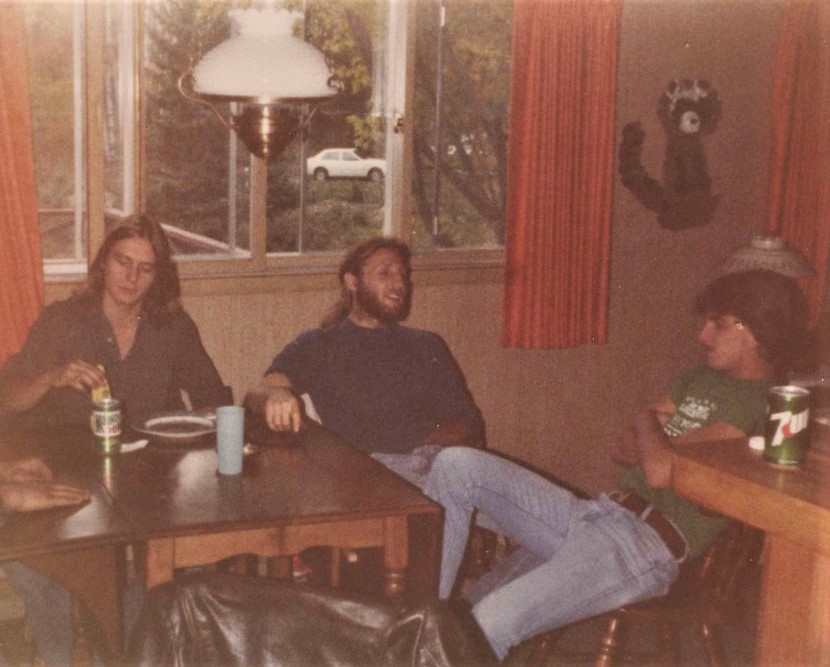
It’s really fantastic to have you. As an active musician, how was the last two years of pandemic for you?
Since March of 2019 it’s been very strange, of course. I rarely got out to play. Perhaps just enough to maintain my “sanity clause.” Thought I might actually be done writing music too; but some, mostly, simple tunes came along that I wanted to be played; including a handful that could be done with just guitar and drums.
The “real” active musicians, like Larry Ortega and Geoffrey Lowe from my last CD, have different stories to tell through the pandemic. They’re extremely versatile professional musicians who play almost 300 jobs a year. For them, the bottom dropped out, though they got some unemployment and made it through to working almost 300 gigs a year again now. (In a country and a world that is becoming more bizarre daily).
Since I make most of my living as a physics and math tutor, I shifted to doing that from home on my laptop; and have worked through the pandemic to this point. I think it was Sunday March 17th 2019; I was on my way to a library where I had three students scheduled, and somebody called me and said the library was closed. A few months later, we deferred our mortgage for six months since my income dipped from all sources for a while – but our place here is like an “Experimental, Regenerative Micro-Farm” so we’re always kept pretty busy working around here; including adapting to climate change in real time… [2]
Did you find the time in isolation to be creative?
Certainly some. I started trying to write a book back in 2015, so I dug in near the beginning of the pandemic and finished that. It’s only 70 pages, but when read from cover to cover it says pretty much what I wanted to say. The title is: Human Problem Solving in the 21st Century?: Economics and a Truce with the Billionaires. [3]
Maybe later this year we’ll do another CD. There are more than enough new tunes from the last few years, along with some “new old-stock” to complete one. We’ve got a song and a half “in the can” at Dr Caw; and several that I’d like to record regardless if they make it to a record or not. Lenny Richier, a drummer and film editor, came here and shot a nice video for ‘Joel Peter’ from ‘Heart of the Matter’. He was here during the most shutdown phase of the pandemic, so he had me walking down the middle of a nearly vacant street, which is usually very busy with cars going 75 to 100 kmh. Looking forward to working with him again if and when possible, as a filmmaker and as a drummer.
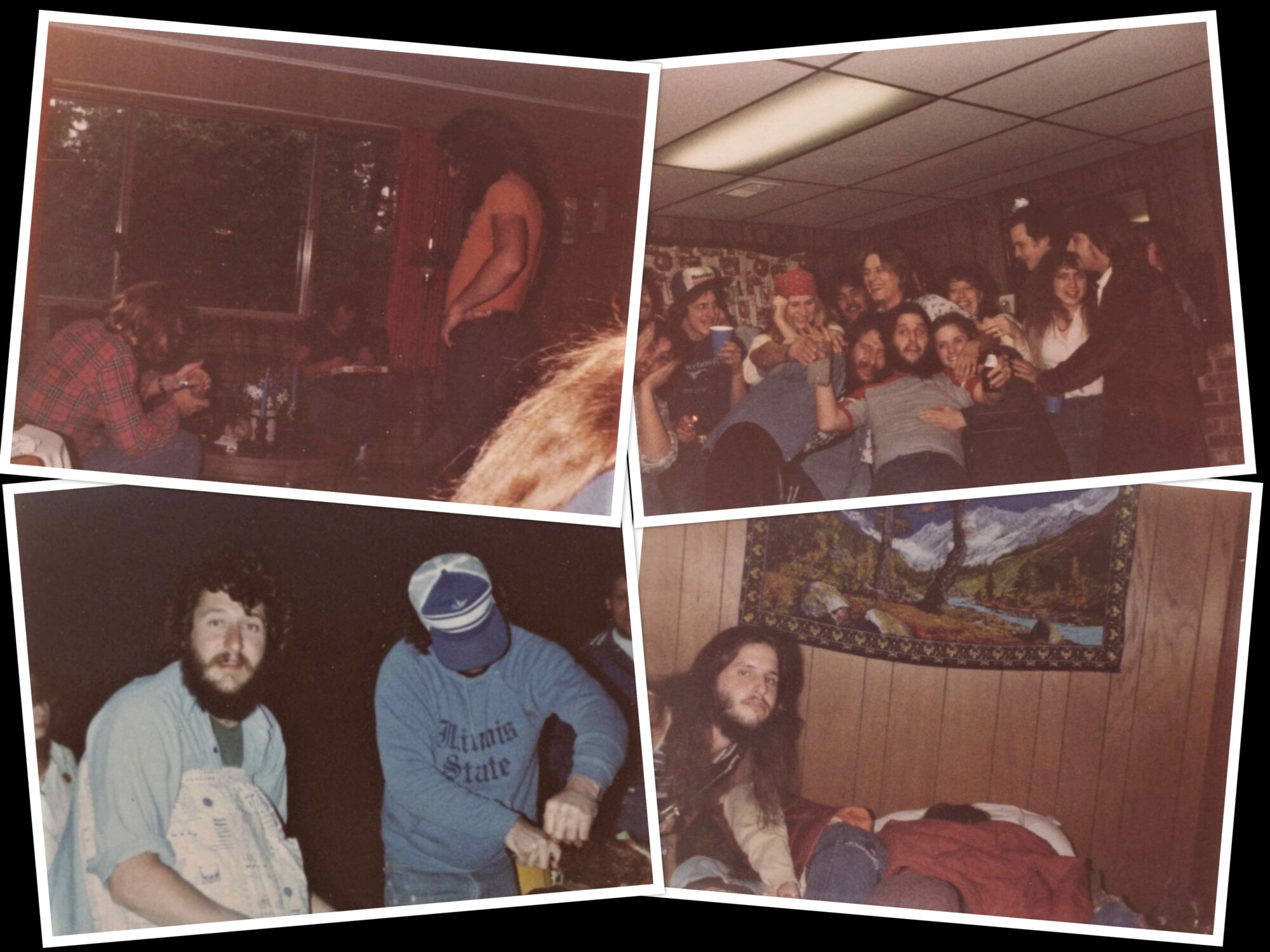
What made you pick up guitar when you were young? Was there a certain moment when you knew you wanted to become a musician?
Don’t remember a specific moment when I knew I wanted to be a musician, but I think watching The Monkees made me want to learn guitar. I was about 7 or 8 years old, and thought they were “cool,” and having fun… I liked The Beatles and The Rolling Stones too, and some “radio songs.” Had a few guitar lessons from two different teachers, and wasn’t inspired by those. [4] But I must have learned the basic chords and how to read chord charts.
While I was in 3rd or 4th grade, I played ‘Yellow Submarine’ and ‘Eleanor Rigby’ at a school talent show. And other than remembering that I played those two songs, I remember some older kids doing a skit wheeling out a 55-gallon drum and leaving the stage, and then the “Janitor in a Drum” came out of it. I’d seen that stuff advertised on TV. Thought that was hilarious and creative at the time… We moved from the Philadelphia area to a suburb of Chicago when I was ten.
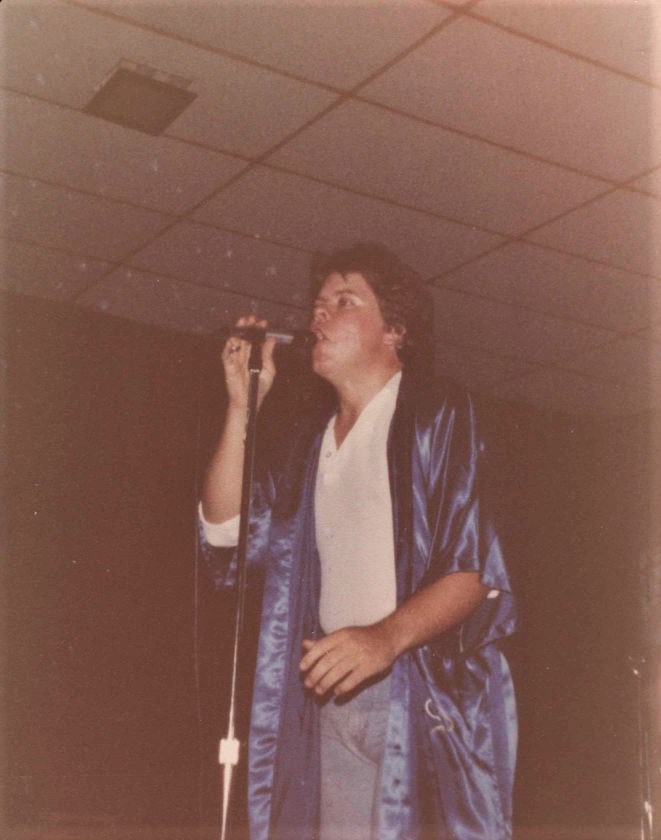
Tell us about the early years, where did you grow up and what was the local scene like?
We had moved to Downers Grove, Illinois in January 1970; the middle of 5th grade for me. And being a new kid in school I had my share of guys wanting to fight me. No guns or knives or any weapons, just some kind of fighting was required every other month or so… There was some of that back in Philadelphia too. That followed me well into junior high, and a little in high school.
When we got to the Chicago area, I could play some songs, but certainly wasn’t a “guitar player” yet. I had a $13 Harmony acoustic, and at some point, a cheap hollow body electric too. Must have had a little amp, but I don’t remember it…
When I was twelve I got a used drum set and was playing in a neighborhood band in junior high. Switched over to guitar when our guitar player moved to Florida. It took a little while for bassist / vocalist Mike Powers and I to find a drummer who was better than I was. That was Paul Filinovich. He just had a natural feel, a solid groove and was a great all around drummer.
I think my folks bought me a used Fender Mustang and a Deluxe Reverb for around $200, when I finished junior high. The market value of older Fender guitars didn’t explode till the 1980’s). So, by sophomore year in high school, Mike, Paul and I were called “Rage”. We played together for over 3 years; covering Aerosmith, Rush, Grand Funk, some others, and Ted Nugent, especially from his 1974 “Native American” records, ‘Tooth, Fang and Claw,’ and ‘Call of the Wild’.
Rage was one of the better local bands coming out of the area high schools, and I started getting more serious about it. At some point Paul asked me, “Why don’t you start writing your own music?” Till then, it hadn’t occurred to me. But shortly after that, they told me they weren’t as serious about music as I was. So, in the early part of my senior year in high school I actually started playing with drummer Rich Mezger, in what would lead to Winterhawk, in part, to get Mike and Paul inspired to take it farther; since both Mike and Paul were great musicians… [5]
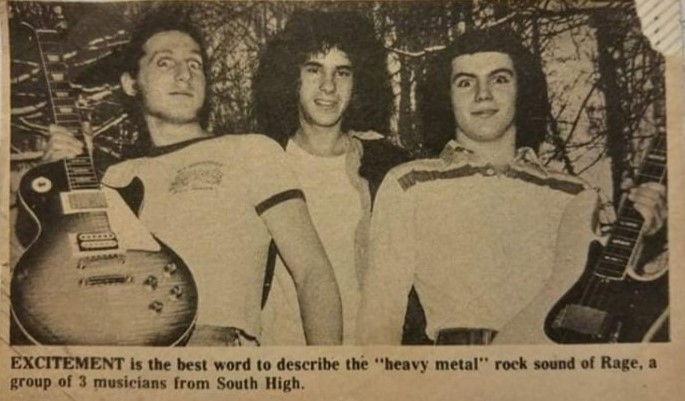
Somewhere along the way, between age 13 and 15, I probably started to believe I could really be a musician… [6]
If you would take us back in time, what kind of fanzines and records would we find in your teenage room?
Perhaps sorry to say; but I don’t think my older sisters had any fanzines, so the thought of having anything like that probably didn’t occur to me either. I wish I could say I was an avid reader, but I wasn’t a reader of anything at a very young age. I only read what I had to in school, until I read The Hobbit and Lord of the Rings; then I started to read other things. (I spent a lot of time on “adventures” with or without my buddies from the extended neighborhoods.)
The records that were mine were from the bands I listed above; along with Deep Purple, Led Zeppelin, Yes, ZZ Top, and more that I’m not remembering now, as well as listening to some of the stuff my sisters had. More “folky” stuff like John Prine and Steve Goodman.
I had a used reel to reel that I recorded some records and Live Broadcasts on for listening. And for learning leads and double leads (like ‘Highway Star,’ and Aerosmith’s ‘Train Kept a Rollin,’ by playing them at half speed…). WXRT and Triad were two Chicago radio stations I listened to back in the mid to late 1970s..
I didn’t have a huge record collection; but my friends; John McLeod, Jerry Hauflaire, Ross Berry, Dan Drom and others did… Which helped expand my horizons. And I started doing concert security work in 1977 when I was eighteen, so I saw a Lot of bands and many great guitar players… [7]
Were you or any other members of the band in any other band before forming? If so, what kind of material did you play? Are there perhaps any recordings in the vault?
Steve Tsokatos was in a band called “The Street Kids” from Chicago before we met him. Doug Brown and Dan Searight were probably in other bands too. They had already been playing together; but I didn’t meet them until we “auditioned for each other.” They were one or two years older, and were living a town away. And we got to work almost immediately, so I don’t remember telling stories about our other bands…
There are a few songs from those early years that never made it onto any records that may exist somewhere. A few I’d like to hear from the pre 1980 era are: ‘Day of the Machine,’ ‘400 Choruses,’ ‘The Challenger,’ ‘Elements of the Earth,’ an instrumental called ‘Fare Well,’ and Dan Searight’s ‘Passions of One’.
And from 1981 through 1982: ‘The Song of Roland,’ ‘The Dream,’ a blues number called ‘That’s All I Can Tell You,’ and ‘The Toys Come Alive at Night’. I started to get a little more conceptual and theatrical in 1982…
‘Early’ or ‘Original’ Winterhawk Recording timeline:
A couple demo recording sessions at Acme and Al’s 8 track studio, probably early ’78.
‘There and Back Again’ was recorded Live in Dec 1978.
‘Revival’: Recorded in December of 1981, released on vinyl in April 1982.
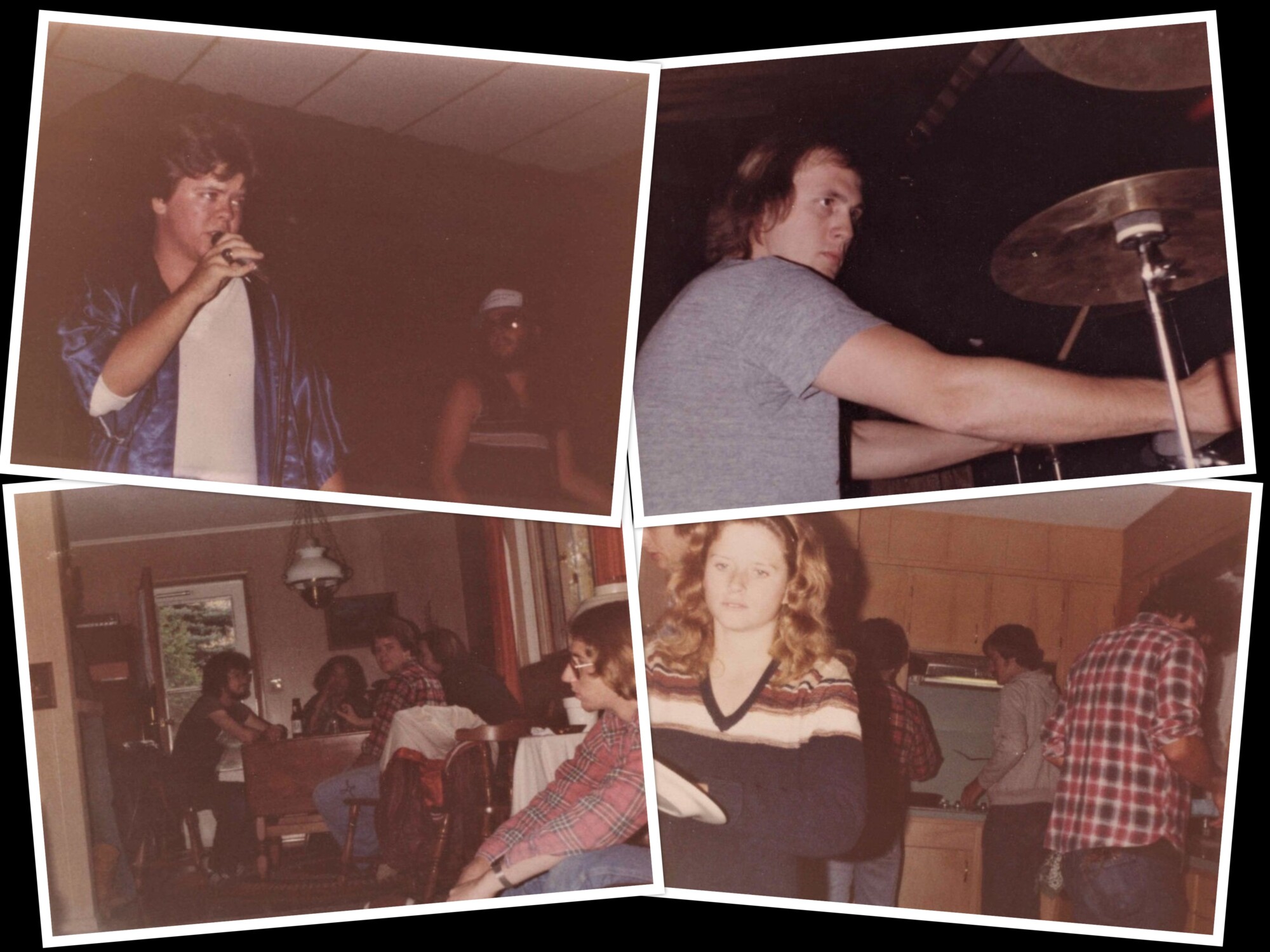
How did Winterhawk start? Can you elaborate on the formation of the band?
Drummer Rich Mezger had initiated getting us together in the spring of 1977. “He was probably too smart for our own good…” I wanted to do a 5-piece band, like Deep Purple, with “one of each”; guitar, bass, drums, keys and a singer. He told me that bassist Doug and guitarist Dan were auditioning for us together, but they could separate if we only wanted one of them. But he had also told them I was auditioning for them. So, when we got together in my parent’s basement, I auditioned them and they were fantastic; so we started rolling right away. I didn’t discover that we had “auditioned for each other” till months after ‘Revival’ was released. (Which was more than 5 years after the original audition). And like a double edged sword, that initial misconception brought us together and also helped to break us up, more than once. [8]
Most of “the original” Winterhawk era was from 1977 to 1980, and the “album era” was from late 1981 till October 1982.
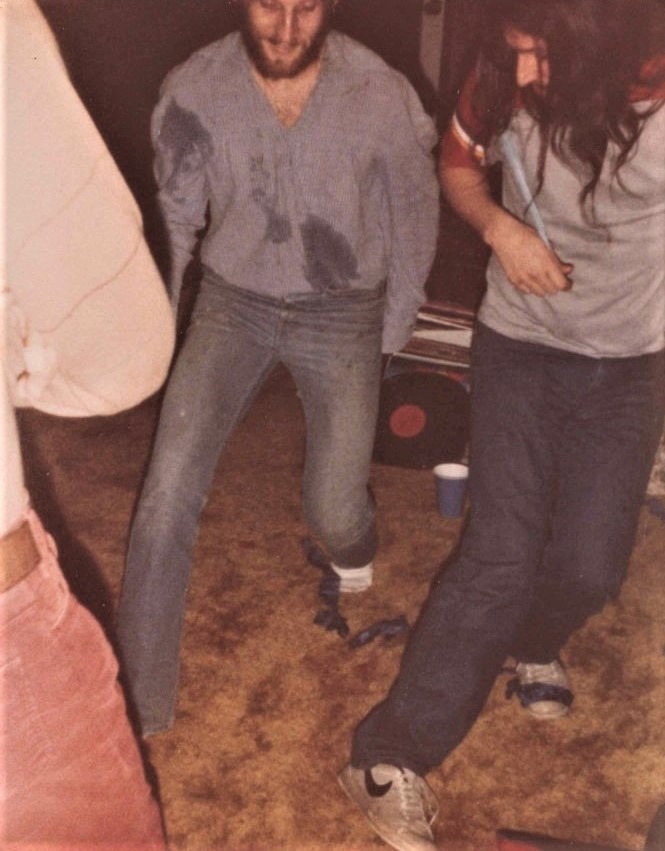
Did you play a lot of shows before releasing your album? What are some of the bands you shared stages with?
We played a handful of shows; but not “a lot,” since the band didn’t exist at all in public from the end of 1979 till April of 82. The list of notable bands we opened for includes: Jefferson Starship, Steppenwolf, Budgie, The Average White Band, Black Oak Arkansas, Survivor, The Boyzz from Illinoizz, The Hounds, Trillion, and several lesser known Chicago-based bands.
Your debut album, ‘Revival’ was privately released under the name of Lambda Records. Do you remember how many copies were pressed?
Another story within a story. There are approximately 1,650 in circulation from the original 1982 release. The first 1,000 probably sound the best, but the master was cut kind of “hot.” Blowing some needles right out of the grooves. So we sent back around 300 of those to the pressing plant. We had a second master cut that was not as intense; so that 2nd thousand are all in circulation.
Lambda (the symbol for wavelength) was my idea for a label. I am, apparently, a pretty terrible businessman. Seems I tend to live some experiences, write about em’, produce some kind of recording; then get on with the next thing.
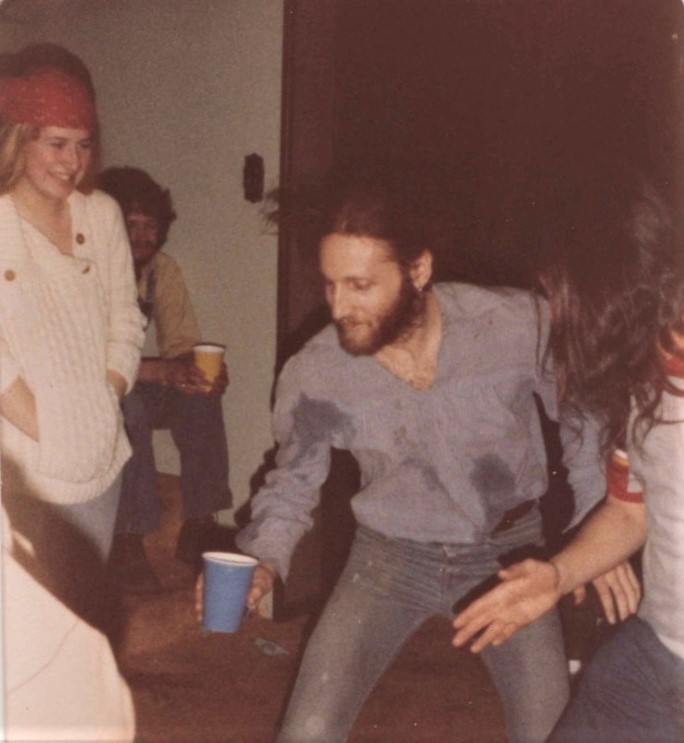
Who did the fantastic cover artwork?
Steve Brown. The Amazing Steve Brown, did the painting and the cover layout. Steve is also a great guitarist, keyboardist, and one of my all-time favorite singers, and life-long friend. (I hope to have him on the next “record”). He’s on ‘There and Back Again,’ ‘Wind from the Sun’ and ‘Face in the Mirror’.
Steve is not related to Doug (Warren Douglass) Brown.
A little Steve, Nick, and the Brown family story: Long ago, my father and Steve’s father, Scott Brown, were college roommates… Steve’s older brother Nick (a fantastic guitar player / jazz musician who wound up as a successful studio musician in Los Angeles) taught me more about guitar than anyone else. He gave me several free lessons when I was about fifteen. He was teaching me some music theory too; which I didn’t really understand till I took a high school music theory course the following year. That combination helped me understand the musical language.
My sisters; Kimmerjae and Julianne influenced me a lot as well. – They’re both musicians and artists. Julie has played on many different records, including my ‘Balancing Act’ and ‘Heart of the Matter’. Kimmer, a great acoustic singer-songwriter and visual artist is becoming quite well known for her multiton stone sculptures. The cover for ‘Truce Vol 1 ‘is one of her drawings. She’s brilliant and inspirational. That rounds out this segment, which started with the brilliance of Steve Brown…
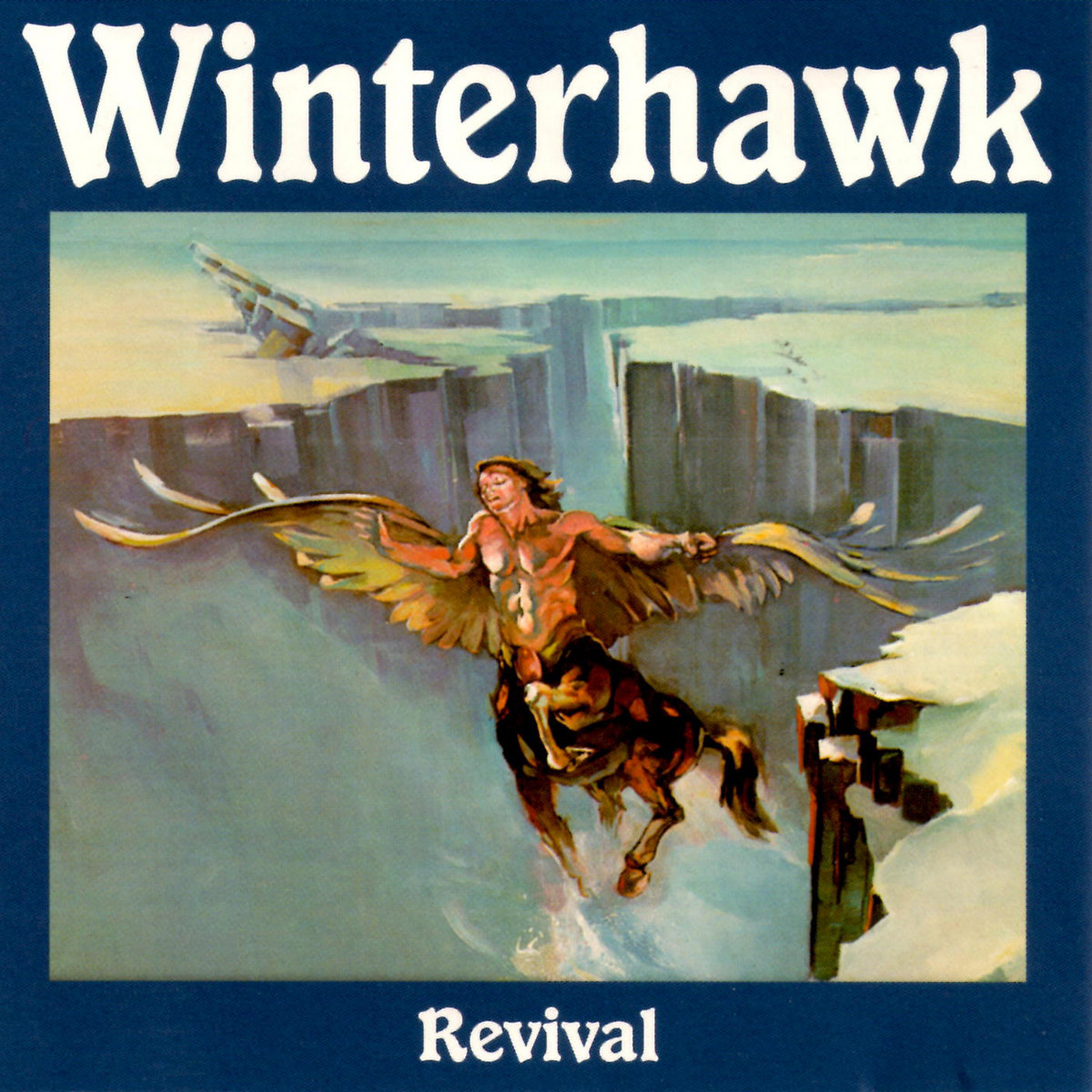
Where was the album recorded and what do you recall from the recording session?
In 1981, on the advice of Mike Rasfeld, (the best 8-track engineer I knew), and Danny DiSilvestro, (my boss at Jam Security); I met Craig Williams, aka “Dr. Caw”. (The best 16-track engineer they knew).
Craig was and is the real deal. He came out to one rehearsal, and we penned a deal for him to produce the record at his home studio (Dr. Caw Recording Studio), then in Glenview, Illinois. 110 hours of total recording and production time. Among many things, I remember we used a mattress to cover my speaker cabinet for the session; mainly so we could play all the rhythm tracks as a 3-piece together.
Doug played a Rickenbacker 4001 Bass; but for much, if not all of the record he used Chris Mazur’s Fender Precision. Chris, aka “The Maze”, was Winterhawk’s ace in the hole for many years. The last sessions to finish mixing ‘Revival’ were just Craig, me and Maze.
I learned a ton from Craig. He’s been critical to several projects starting with ‘Revival,’ but including: ‘Balancing Act’ (some recording, mixing and mastering), ‘Wind From the Sun’ (mastering), ‘Truce Vol 1.’ (remixing and mastering), and ‘Heart of The Matter’ (engineering, co-producing and mastering)
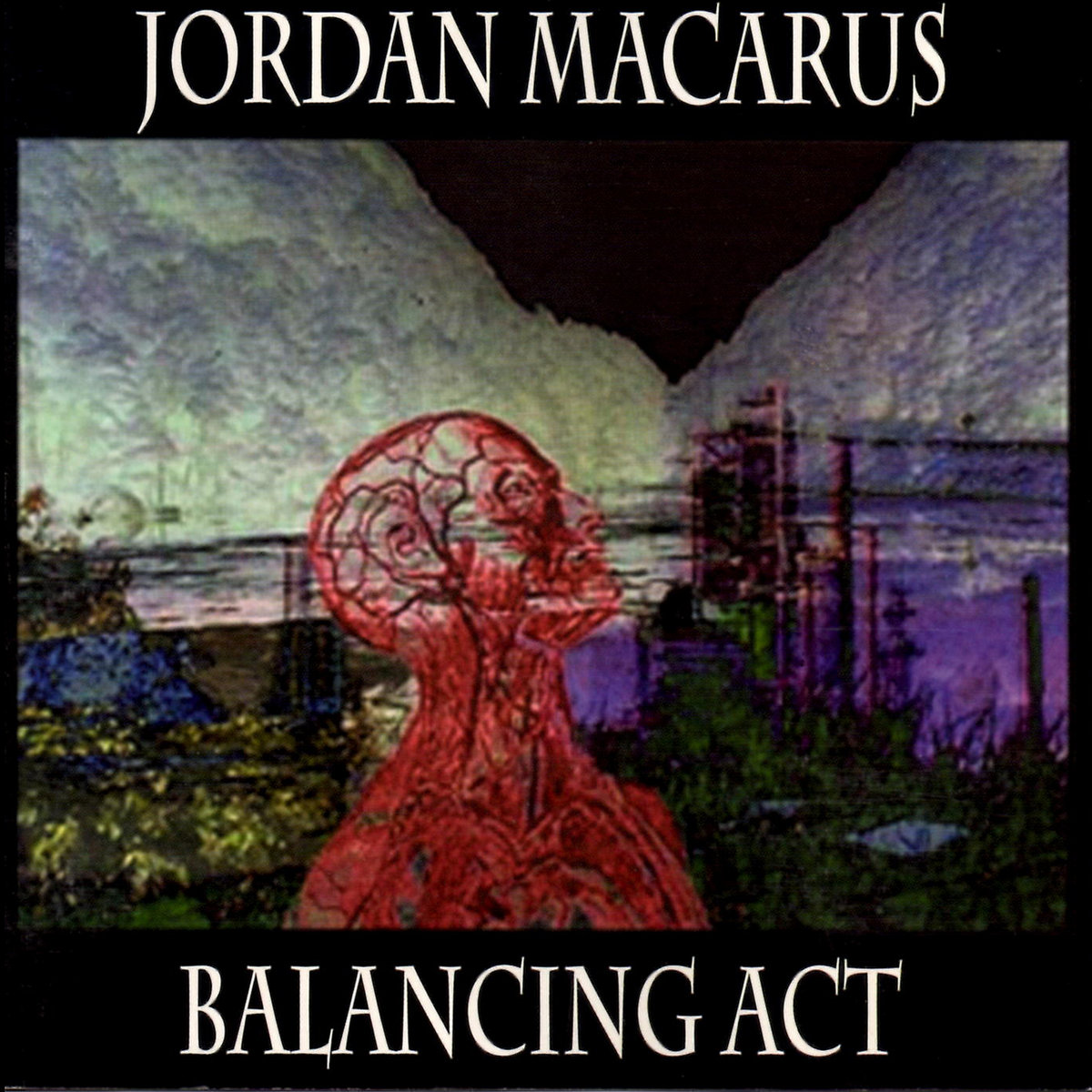
Would you like to talk about the guitar, pedals and general gear you had at the time in the band?
Back in the day, for ‘There and Back Again,’ and ‘Revival,’ we used no pedals whatsoever. Not even inline tuners…
I used: my customized 65 Stratocaster and a used 1970’s 50 Watt Marshall head (no master volume control) with a used 4×12 Orange Cabinet. Both the guitar and amp head were stolen in 1986 (Thus the as yet unreleased song, ‘The Will’)
My customized 65 Strat [9] used on ‘Revival’ and ‘There and Back Again,’ had a Dimarzio Fat Strat for the bridge pickup, with a Dimarzio PAF humbucker as the neck pickup and the stock 65 pickup in the center.
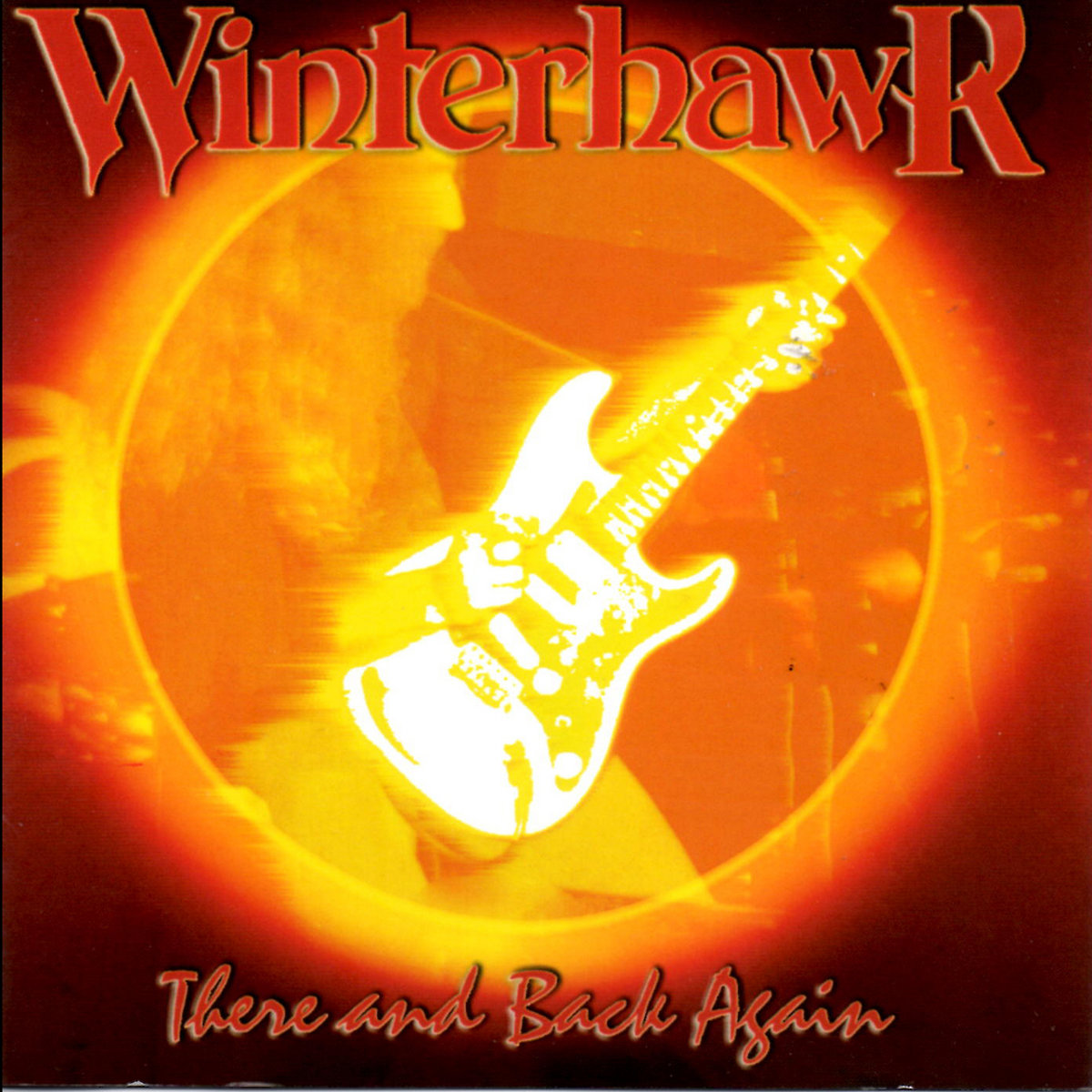
I would appreciate it if you can go track-by-track and share what runs through your mind when hearing ‘Revival’ again?
Wow!
I haven’t listened all the way through for quite a while to ‘Revival’ or ‘There and Back Again’. Probably not since I had to relearn my parts for the 2013 shows in Greece, and Germany 2018.
In the early part of this century, Winterhawk was me, Steve Tsokatos, Chris Mazur and Stevo Vanaria. And since no one could sing up to Doug’s range, in our regular set we were doing, (from the “original recipe tunes”): ‘Intro,’ ‘Ace in the Hole,’ ‘Hammer,’ ‘There and Back,’ and a 6-minute instrumental version of ‘Free to Live’. For the 2013 trip, Stevo gave the high vocals a shot, so we dropped down a half step and added ‘Revival,’ ‘Sanctuary,’ ‘Period of Change’ and the full version of ‘Free to Live’. I really enjoyed relearning and playing some of that, especially ‘Revival’ and ‘Period of Change’.
So back to ‘Revival’:
1. ‘Intro’: One of the most fun tunes to play. I wrote most of ‘Intro’ and ‘Ace in the Hole’ in hotel rooms while working on the road for nearly a month with Chris Hood (of ‘Dreamerhood’). We were doing advance work, and day of the show concert work, for a promoter doing a couple “Atlanta Rhythm Section” shows.
‘Intro’ was written specifically as an opening tune to grab and hold an audience’s attention for a few minutes. When I was doing concert security work in the late 1970’s, I’d seen bands get booed off the stage in as little as 18 minutes. I figured if we could grab their attention and hold it for two songs, we’d avoid that situation. But when I played it for Doug Brown and Steve Tsokatos, they said, “That’s just a bunch of guitar riffs strung together.” (Which was totally correct, but I could feel where it could land). So, I made a rough recording with me on drums and two guitars, and they both dug it, so we did it.
‘Ace in the Hole’: Wrote the song part and some of the instrumental bridge in the hotel rooms. But I think we finished up the arrangement sometime later in the basement of a house Doug and his wife, Kim Victor, were renting. And probably because Doug and I had played it so many times, we thought it would be the easiest song to record for ‘Revival’. But if my recollection is correct, that’s the only one where we used the front of one take, and spliced the back half of a different take onto it. We may have done at least two rhythm track takes of several songs. We would use 8 of the 16 tracks for ‘Take One,’ then use the other 8 tracks for another take; and pick the best one to finish producing. One moment I can still see clearly is when Craig was making the critical cut on the 2” -16 track tape. The cut tape piece was just flowing onto the floor at 30 inches per second. I wasn’t ready for that. “That freaked me out..!”
3. ‘Period of Change’: I think this felt like “the real piece of artwork.” With the acoustic guitar, Doug’s bass solo, and the storm and wind recordings we brought, that Craig processed… I remember when we played the rhythm track on this one the first time in the studio: Doug, Craig and I thought it was right on. Something about Scott’s playing bothered him. (I can’t remember what he thought it was). So we kept the first take, then spent what feels like hours trying to beat it with more takes… And finally, Scott decided he liked the first take. So the one on the record is definitely the first take. It was actually funny at the time, even though we were really tired..
My guess is most of the tracks on ‘Revival’ are from their first take; but I could be way wrong about that. Other than ‘Ace in the Hole’ and ‘Period of Change,’ I think the decisions were pretty quick about the takes; and probably no more than 3 takes on any of the other songs. [10]
4. ‘Can’t See the Forest for the Trees’: I remember Doug sitting on a couch before a rehearsal, playing the bass line and singing this one when he wrote it. (It was for Kim Victor, before they were married). It was all there; I just voiced my chords for the choruses, and the band (Doug, me, Dan Searight and Steve Tsokatos) started playing it that night.
“This song was key to getting the record done.” The band had been broken up for more than a year; so when Maze and I went to Doug to try to sell him (and Scott) on the idea of doing a record; we told him we’d do this song with him playing lead guitar. He was excited to do that. I do the rhythm guitar and one short lead into his lead; but Doug is playing the lead all the way out. A testament to his monster talent! He was a tremendous bassist, vocalist, guitarist, drummer and piano player.
5. ‘Revival’: I wrote this song after we opened for John Kay of Steppenwolf. It’s not autobiographical, or clairvoyant. Or at least it wasn’t supposed to be… It just got me thinking about the life cycle of us “rock n rollers.” And once again Doug’s bass solo is just beautiful and perfect…
There are a few songs where I’ve changed a lyric or two, long after it was recorded or considered finished. This is one of those few. Perhaps for karmic purposes, if I ever sing this song (In addition to not trying to emulate Doug’s voice. Rather, just singing the story with my own voice. And hopefully getting someone with a high voice to sing the critical high parts and the ending); the lyric “sold” will be replaced by “poured”…
(And somewhere in here I mentioned this song was fun for me to revisit for our two trips to Europe. It is fun to play, and I’ll try to play it again with some good players, somewhere sometime in the not far off…)
6. ‘Sanctuary’: This one was the most collaborative. Doug showed me the first parts, and I got inspired by it, and came back to him with my ideas, and we completed the arrangement, again with Dan Searight and Steve Tsokatos. Doug’s initial inspiration came from the movie, Logan’s Run.
7. ‘Free to Live’: In retrospect, this is certainly one of the anthems for my life that I started writing when I was very young. (No doubt, also some influence from Lynyrd Skynyrd). I thought at the time I was writing it to my girlfriend; but it was probably more to my parents. From a very young age I had a sense that whatever I decided to do with my life would probably be uncomfortable for my folks. At eight years old I had sort of a clairvoyant moment about it. I “ran away,” and got as far as sleeping in the backyard of our Philadelphia suburban house; but I didn’t want to hurt my mom’s heart, so I didn’t tell them about it.
A note on the writing of ‘Free to Live’: When I heard Doug sing for the first time, he was just giving a shot on the first song we wrote together; (‘The Difference’). I had written some, largely throw away lyrics, just so we’d have something to sing. We ran it, and I sang the lyrics one time through. Then Doug said, “let me give it a shot.” And when he sang, “the jaw of my mind fell wide open”… I was amazed! Didn’t even know he could sing at all… But from that moment on I was writing with his voice and capabilities in mind. I could write melodies that I could never sing myself, but he could….
Once, while rehearsing for ‘Revival’; instead of his last ending note an “A,” Doug went all the way up to an “E” (The one higher than the guitar neck goes..) He nailed it! Scott and I had to grab our ears because it was so pure and intense. We just stared at him with that ear-to-ear grin… Not only was Doug an amazing musician and singer, he also had a great sense of humor…
Anyway; in the 20th Century, most of our live shows would start with ‘Intro,’ and end with ‘Free to Live’; with ‘Can’t See the Forest’ as the encore…
What followed next for the band?
I suppose anyone who names their first record ‘Revival,’ should expect to have a rather inverted musical career…
As soon as the record was released we did several local shows with me, Doug and Scott, Rex Carrol on guitar; and Maze doing some keyboards, acoustic guitar and a little acting as Bartholomew, the Toy Maker, for the dramatic piece, ‘The Toys Come Alive at Night’.
We did many shows over the seven months we were together; and were just starting to really get some momentum, with a couple of great gigs booked. But Doug and Scott quit in rather dramatic fashion in October of 1982…
With Maze’s help, and Rex Carrol staying on; we auditioned about fifty players over a month or two; and gave it a short try that didn’t quite fly; and I knew it. And knew I had to let it go, at least for a while…
When did the band stop and what did you do during the big time gap between?
Doug Brown (along with Steve Tsokatos) quit Winterhawk the first time in late 1979; and Doug (along with Scott Benes) quit for the last time in late October 1982. Doug did call me two years later to apologize; but we didn’t talk about getting back together. I think he may have done a little singing and recording in California in the 80s or 90s. It never occurred to us to get some kind of counselor or mediator to resolve our differences. We were both probably a lot more psychotic than we thought we were…
So, after I accepted that Chris Mazur and I couldn’t rebuild the band without Doug, I was worn out and disillusioned…
Maze and I had gone to Northern Illinois University from the fall of 1980 to the summer of 82’. Which had included brainstorming, and completing, ‘Revival’. I had moved back to my parent’s house to work a few odd jobs and try to get Winterhawk “flying” after the record was out. We worked hard that whole year, but when I accepted that Winterhawk was done, I bought an Amtrack train ticket that was good for a month; and went to visit an old friend in Denver, Colorado, and my cousin outside of San Francisco. I spent two days camping and hiking in the Colorado mountains without a compass; which was like “another” near-death experience, that helped bring me back to life…
After coming back home from that two-week adventure, I worked some concert security and a few other part time jobs, and took my father’s advice; filled out the paperwork and applied to the University of Illinois to finish a physics degree. I wish kids today could live as cheaply as back then. I lived in rooming houses for $100/month and worked part time for the University for $3.35 / hr. There were many, many adventures and tangents between 1983 and 1987 when I finished up there.
In the back of my mind, I knew I was getting a physics degree for my father, and was going to get back to music one way or another. Music and the writing of it has been woven into my life from the beginning. I tried to give it up more than once, but it’s an essential part of my sanity clause, and my soul. I didn’t play every day, but I sketched out music, at least on cassettes, wherever I lived and whatever I was doing…
Post-‘Revival’ timeline of musical and non-musical occupations and endeavors:
1984: While working as a student employee for the University of Illinois, they sent me to a government lab in Upton, New York for the summer. Another story within a story; but they offered me a salary to stay on to help finish the construction of a 300-ton Neutrino Detector to keep that project on schedule. I left New York in December of 84.
1985 – 87: ‘Oscillated: Lived in Urbana, then Glen Ellyn and back to Urbana, IL to finish my degree. Along the way, worked several jobs, started supervising concert security, met drummer Paul Piccirilli, collaborated with Steve Brown; and met Nastasha [11], the young coyote who would live with me / us for thirteen years. Who also travelled a total of 2,000 miles with me via motorcycle…
Post 87 employment related endeavors: I applied to Northern Illinois University to pursue my “Environmental Economics” research idea as a graduate student; but they weren’t sure what discipline it really was. It wasn’t physics, so I’d definitely have to take some additional course work, depending on what discipline it was… About a year later, the advisor I spoke to told me it was primarily “Math” (Matrix Equations “like modern weather models”). I was already getting on with other things, including some music, and paying down my student loans, so I kept doing the research subconsciously, and ‘rolled on…
Continued doing part-time concert security work, and other jobs including: supervising a window washing crew, home inspection, a few delivery jobs and tutoring math and science independently and for a couple small companies.
My security work evolved into a full-time job as manpower coordinator for a concert security / crowd management company from 1990 through 94. Many stories there. (The song ‘This Song is Not Over’ is the summary of our work at the 1994 Woodstock Festival in Saugerties, New York.) Our success on that job was overshadowed, on our way home from New York, by a collision of trucks and buses on a bridge at the Pennsylvania / Ohio border, sending 40 members of our crew of 125 to six different hospitals. The workman’s comp claims related to that accident would cause the company to close and reform; and ultimately me, and my boss, to move on from that industry.
My son, Zachary, was born in March of 1991. Interesting Note: In August 94’, 3-year-old Zach had a dream about the security crew getting into an accident on a big bridge less than two days before it happened…
November 1994: Took a little severance pay from the security company, and took a job as a roofing inspector.
After six months, got laid off from the roofing inspector job; and used that brief period of unemployment to finish work on ‘The Passage’ CD.
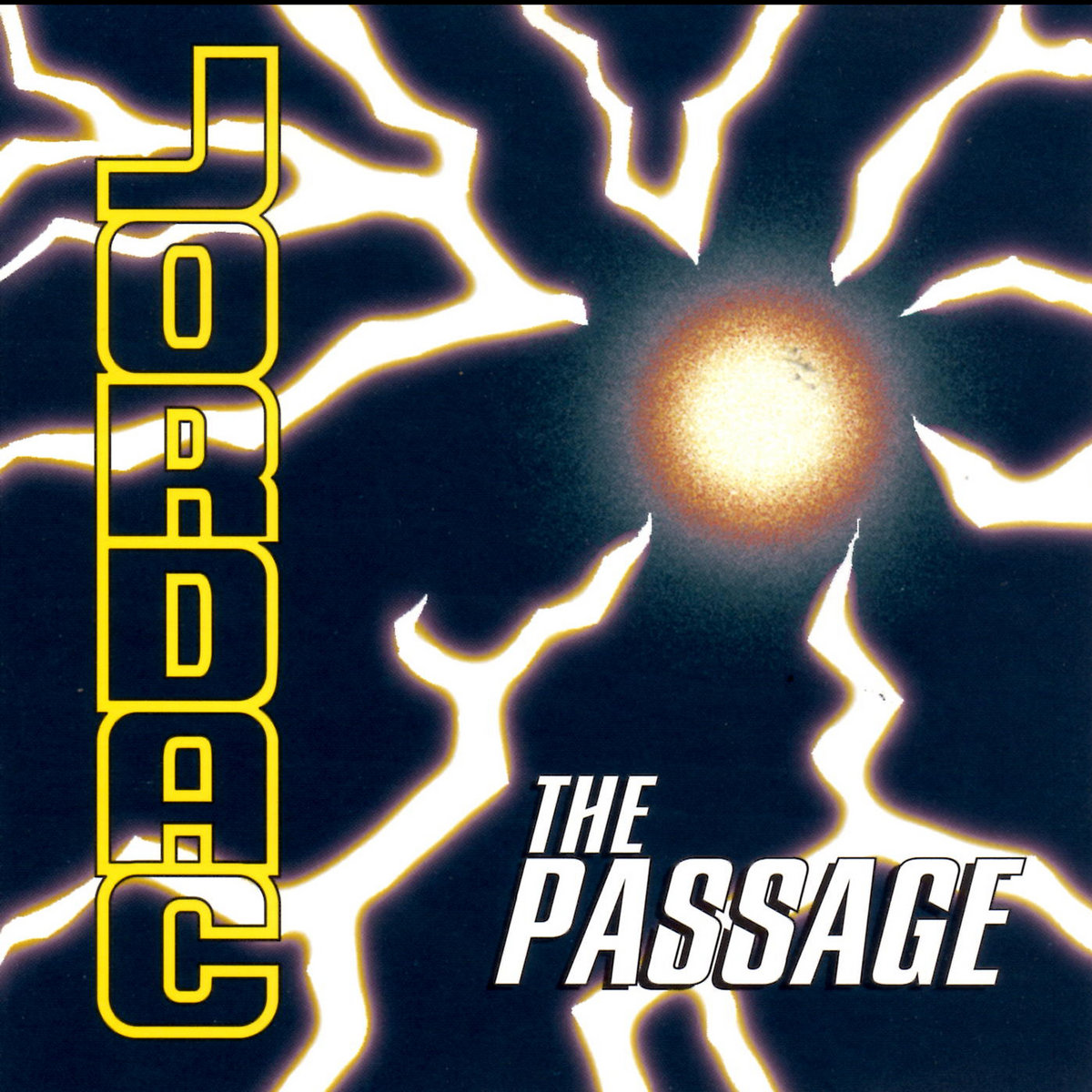
’95 – ’97 Worked a few part time jobs, including loading trucks for UPS and substitute teaching at over 35 schools in every subject. And decided, again with my father’s help, to get my teaching certificate through a local college. Then Taught physics and chemistry at a private school for a year; meeting Christine Tobias in early October of 1998.
Christine, an excellent acoustic player and fingerpicking teacher in her own right; had called Curt Van Loon (who I was renting a room from) to see if he wanted to accompany her and a female singer for a short gig. Curt was busy with something; and I was willing, if not itching, to do some kind of playing; so I said I’d do it for free. I went to her place to meet her and the singer; and played ‘Fire on the Runway’ for them. That began our relationship and the rest of both of our lives… She was working as an auto mechanic, and shifting towards being a service writer; but she wanted to help manage me back into music. We had our struggles with managing me… Nevertheless, she was the catalyst for everything. 7 of the 8 full length CDs were put out after we got together. [12]
Musical Endeavors / Recordings:
Post 1982:
1986: Steve Brown, Paul Piccirilli and I recorded ‘Elijah’ and ‘Fallen Dinosaur’ at Dr. Caw, which appear on some versions of ‘Revival’… (Those were the last recordings of the “blue-wave Strat” before it was stolen…)
There may be some unreleased recordings out there from ‘The Wrong Man,’ a terrific four piece with Steve and Paul, and Rod Capps, from 1988 and 89’. We played several shows and did some demo recordings, before bass player (and all around phenomenal musician) Rod Capps moved back to Michigan…
1989 – 1993: Writing and doing gigs as “The Suns of Jordac” with a few different incarnations.
1992: Recorded ‘Wind From the Sun’ at my home studio, aka “Raccoon and Coyote Studio”) – released on Cassette in 1992.
1994 and 95: Did several gigs as “Jordac”: 4-piece with bassist Greg Cassel, Rick Smith on guitar, keys and vocals; and Greg Gillespie on drums. Notable gigs: opened for Kansas at Toto’s in Algonquin, Illinois; and Dweezil Zappa at The Park West Chicago.
CD Releases:
1994 Jordac, ‘The Passage,’ Recorded Live at The Metro; Chicago, IL.
2000: ‘Balancing Act’ – Also from a live performance – 7 players in this band.
2002 ‘There and Back Again’ released on CD.
2003 ‘Wind From The Sun’ released on CD.
2006: ‘CFM’ ‘Face in the Mirror’ (List of 15 players at Jordanmacarus.com)
2012: ‘JKI’ ‘Truce Vol. 1’ – Mostly live.
2018: ‘Heart of the Matter’
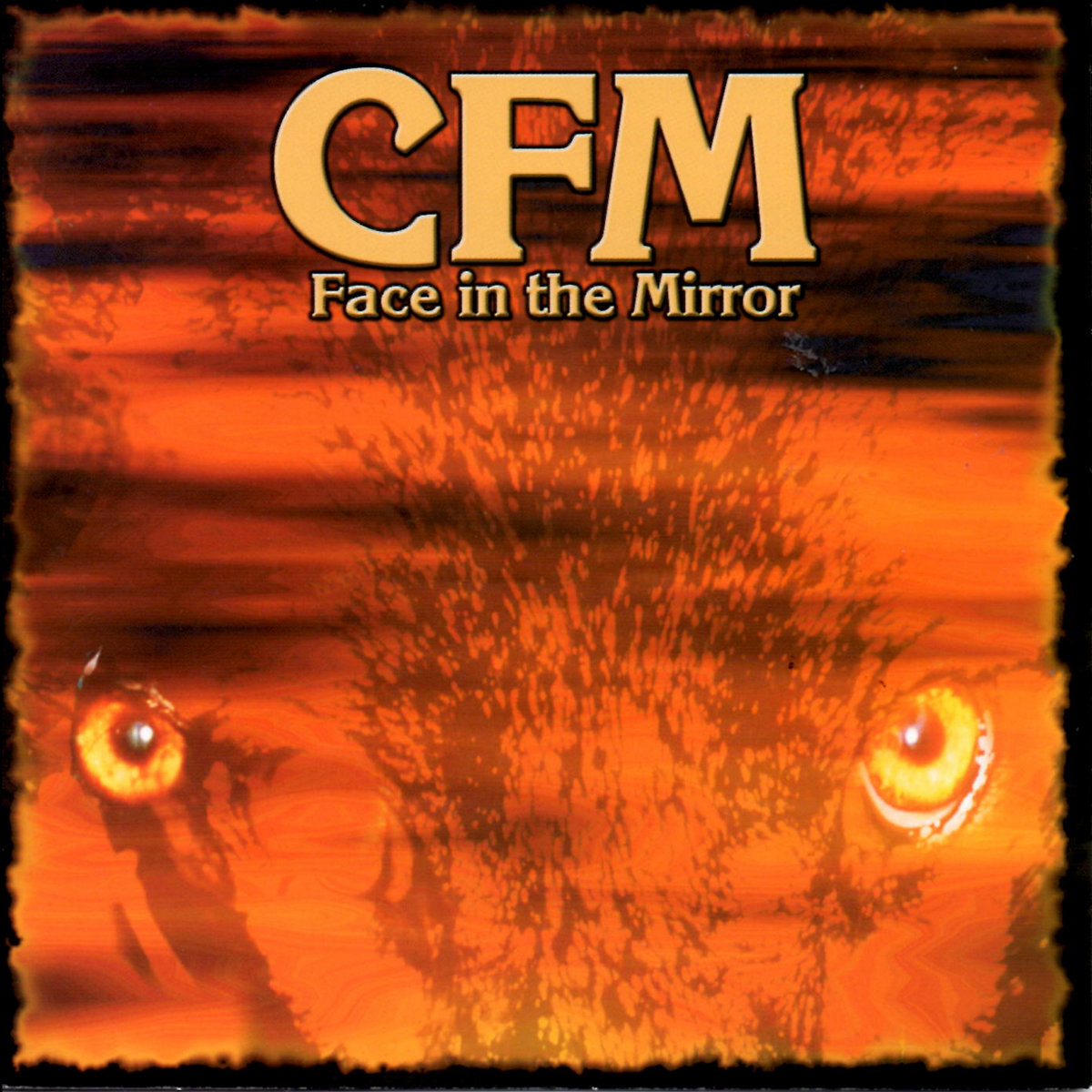
Early in this century, to get myself going again musically, I worked and played in many bands. Covers and originals. Working with as many as eight bands in a year. Though I never made more than 25% of my income from music. But playing on other artist’s recordings and in different cover bands as a player, a sub, and as a hired band-leader for Marty Dudek, aka “Neil Big”; helped me to feel and appreciate better all the different perspectives.
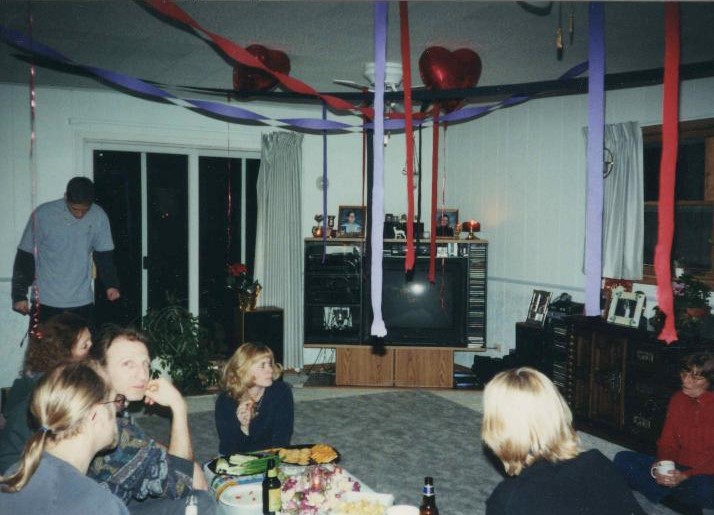
Shortly after Steve Tsokatos’ wife Donna passed, Maze and I got back together with Steve to lift his spirits. We did some writing and performing, along with Steve’s daughter Amoureena, as “Future Back”. Which, along with bassist / guitarist Steve Vanaria led us back to Winterhawk for this century…
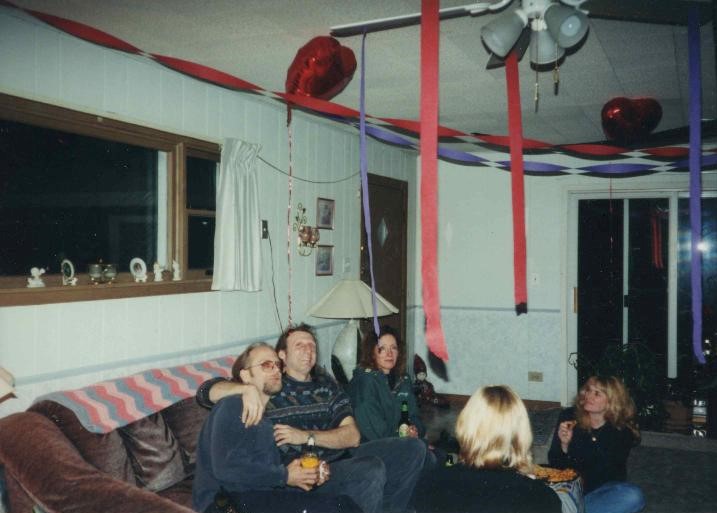
I would love it if you can share about ‘There And Back Again’ and ‘Wind From The Sun’?
‘There and Back Again’: Recorded Live at Chicago’s Aragon Ballroom in December 1978 in front of a crowd of two thousand or so… (The band was me, Doug, Steve Tsokatos and Steve Brown). Mike Rasfeld recorded us on an 8-track reel to reel. –A few months after that show we mixed ‘Sanctuary’ and ‘Hammer’ at Acme Recording Studios. We did a handful of shows after that as well, but sometime in late 79′ Doug Brown quit for the first time. The tapes were stored in a box and time passed…
I met Dennis Bergeron and Phil Baker in the late 1980s. They were putting out a fanzine and had discovered the ‘Revival’ LP at a used record store. So, in addition to helping get Winterhawk known on the “underground,” we would talk about those old Aragon tapes every so often. In 1998 Dennis and Phil, aka Monster Records, put out Craig William’s remastered Revival on CD. That process required baking the ‘Revival’ 2-track master tape.
So, a couple years later Dennis initiated it. I sent out a box of tapes, 8-track and 2-track reels for baking. Rented an 8 track, and still had my old 2-track. So I transferred what I could to digital tape formats. I reconstructed the ending of the song ‘There and Back Again’ in Curt Van Loon’s garage studio. (The Live reel ended about a minute before the song did…)
I’m sure I would have gone to Dr. Caw to complete it; but I had been hired to do some guitar tracks for Tim Hort’s band, “The Radio Hour”. And when I walked into Blaise Barton’s studio I saw a framed painting of Mike Rasfeld above the control room door. He was surprised that I recognized him. (Mike had passed on quite a few years earlier) Turned out Blaise had apprenticed with Mike; so having him finish Mike’s work was the right decision for both of us. Blaise and I finished producing it at his studio in Chicago.
‘Wind From The Sun’: This was really my first “solo record”…
‘Intergalactic Canoeing Music,’ inspired largely by Arthur C. Clarke’s writings, especially the short story “Wind From The Sun”. There were other inspirations, but this is pretty much a “concept record” about a space journey and the thoughts of a “journeyman” before, during and afterwards…
Around 1989 I was tutoring through a couple small companies, doing security and a few other odd jobs for my living; and renting a 400 square foot apartment attached to a big house on 5 acres. With some financial help from my father I bought some mostly used gear and built a little studio which all fit into a 9 x10 ft room with a closet where my guitar amp was enclosed.
To pull off recording in such a small space, the $100 drum set was converted to triggers by some young genius for $120. The triggers went to an Octapad, connected to a sequencer and Greg Cassel’s Roland drum machine. We “stripped” one track of the 8-track reel to reel with SMPTE code; which synced the keyboards and digital drums to the rest of the audio. The 7 audio tracks consisted of high hat, bass, guitars and vocals. And we mixed down to DAT at that time.
Mixing the fourteen-minute instrumental title track took several hands; especially in the middle, “deep space” part. I’d have to switch over the kick drum input to the 2-track reel to reel, and turn on the recording of the cicadas and baby racoons… [13]
There was just enough room to rehearse with a 4 piece band. Over the five or six years I / we lived in that place, there were a few different groups of players: Greg Cassel played bass for all of them. When we played live, we called ourselves “The Suns of Jordac”; and the player list varied with drummers: Paul Piccirilli, Don Steiger and Dan Hoch; Tim Lloyd on second guitar and vocals, with Curt Van Loon on keyboards and some guitar; along with occasional guest appearances by Maze, my sister Julie, and Steve Brown. My son Zachary was born while we lived in that little apartment. And at around age 1 Earth year, was in his playpen enclosure with a mic; singing along with me and Greg jamming on drums and bass…
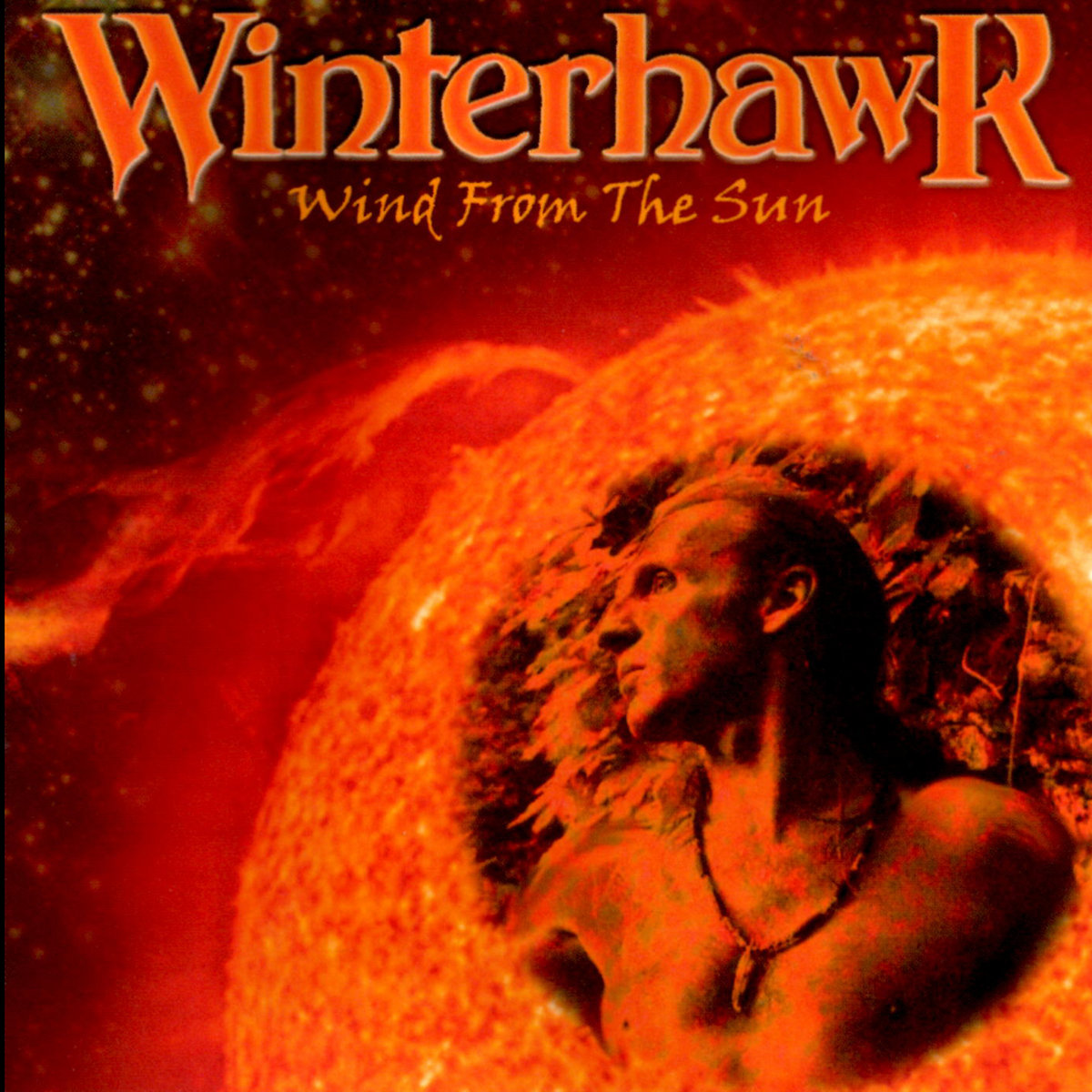
Originally, we released ‘Wind From the Sun’ by The Suns of Jordac in 1992 on cassette. We probably made 100 or so of them. When Dennis and I decided to remaster and release it on CD in 2003, he thought it sounded like a logical progression for Winterhawk, so it went out as the 3rd Winterhawk CD. I know some Winterhawk fans considered that a “stretch,” and they’re probably right. I do feel it’s one of the most “artistic” of my recordings though…
You have quite a lot of music available via Bandcamp. What are some of the latest projects you worked on?
The most recent album is ‘Heart of the Matter,’ released in 2018. And my little book was finished in 2019. At Bandcamp, there’s also a single of ‘Shenandoah’ which will go on the next record (‘Rhythm Tracks’ recorded during the ‘Heart of the Matter’ sessions) And a solo acoustic version of ‘Heart Reprise’.
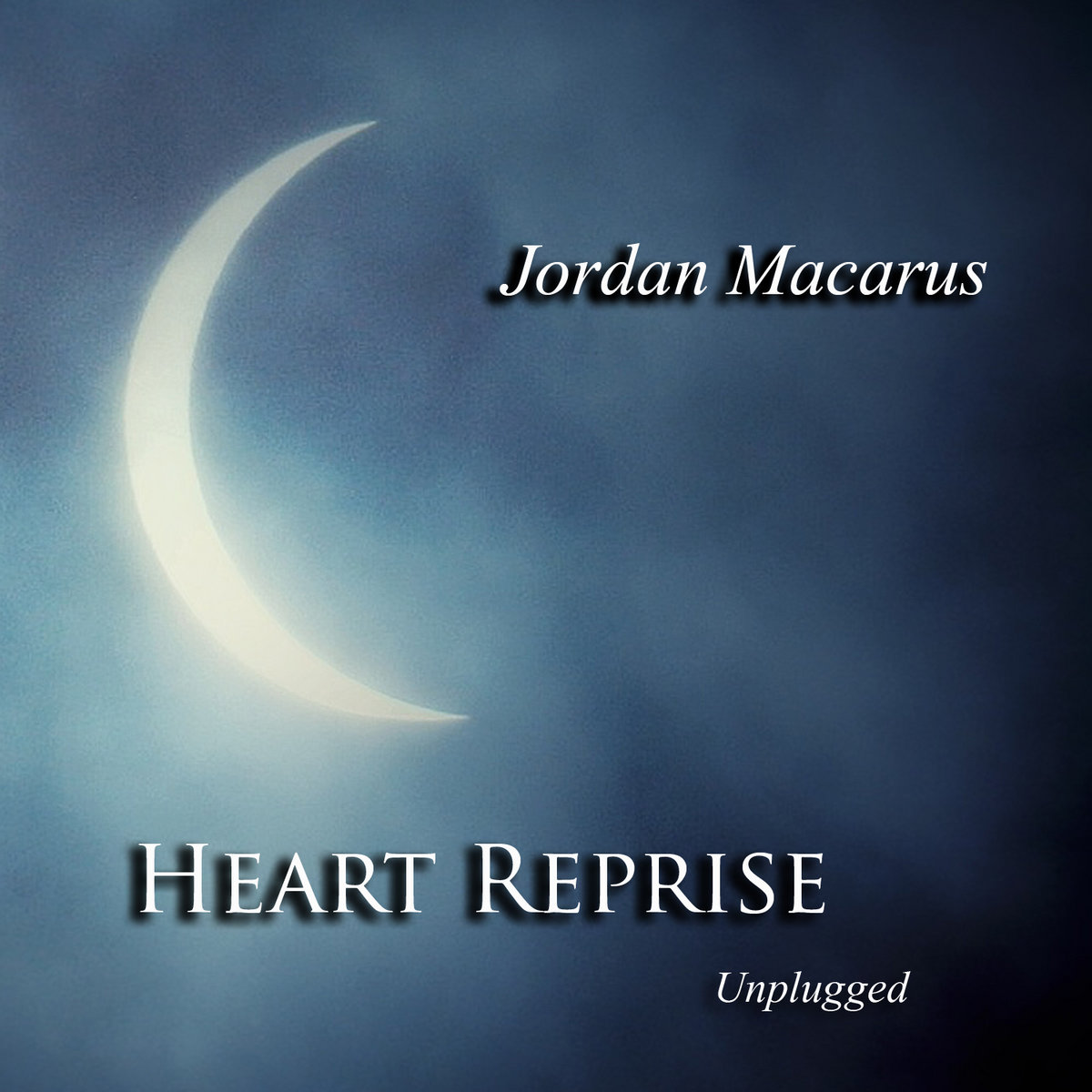
I played that against a click, so we can add bass and drums and put a band version on the next record as well…
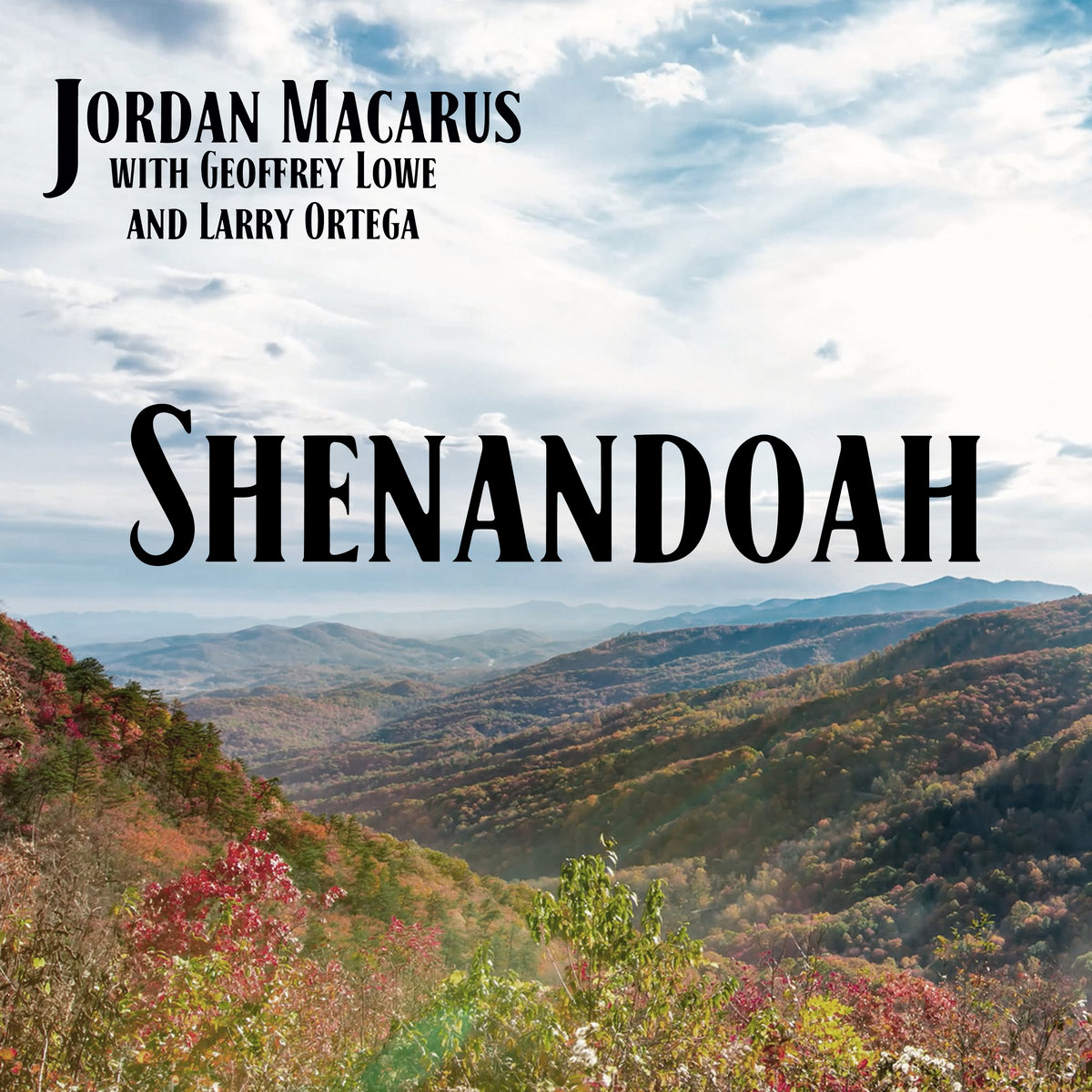
Tell us about ‘Heart of the Matter’.
After ‘Truce Vol 1’; I was writing songs mostly on a little “Orphan” guitar13 with nylon strings. Focusing on the lyrics and the heart of a song. The original working title for the new record was ‘Truce Vol 2’. But, by the time we were closing in on finishing it, ‘Heart of the Matter’ is what felt right to the five of us; Geoffrey, Larry, Craig, Christine and me.
Geoffrey Lowe and Larry Ortega are just Amazing, and fun to play and work with!! We only rehearsed a handful of times to prepare; but recorded 13 rhythm tracks in just 3 sessions. To make the post-production affordable, we did two takes of each tune and recorded them all against a click; so we’d have some options for any questionable section of a tune; and to make it easy to sync up any tracks we might add from home.
I recorded nearly all of my leads from home, as well as a few rhythm guitar tracks, some backing vocals, and Isaiah Webb’s keyboard tracks. Geoffrey did some digital editing from his home studio; as well as recording his bass leads and my layered guitar chords for the instrumental (‘Jerry and Toni from Reno Part II’). And for that same tune, Larry added some percussion and synthesizer from his home studio. (Larry also played with Winterhawk in 2018 at ‘Keep it True’, Germany)
I can’t say enough about Geoffrey, Larry, Craig and Christine. But Isaiah’s piano tracks, my sister Julie’s vocals and violin, and Chelsea Hood’s vocals were All vital to making it a complete record. That’s my opinion, but I’ve heard that from other folks around here as well… ‘Heart of the Matter’ is perhaps a record about the pursuit of honesty.
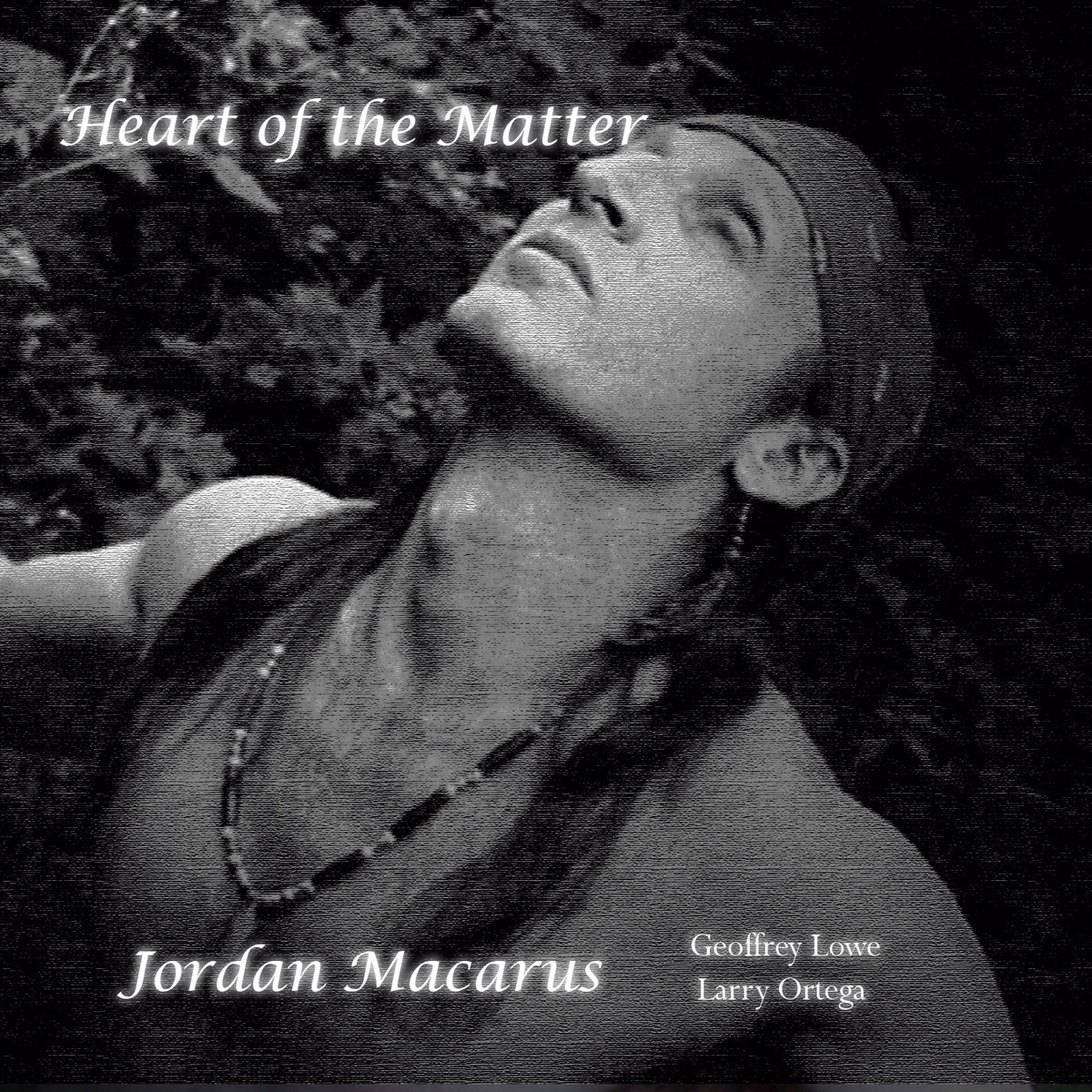
“And, ‘Heart,’ along with ‘Truce Vol 1,’ and my book pretty much summarize my hopes for the world; and suggestions for human problem solving on small and large scales…”
I think ‘Revival’ and ‘Heart of the Matter’ are probably our two best-produced albums. Both recorded and produced by and with Dr. Caw. ‘Face in the Mirror’ is probably the 3rd best of our productions…
How was it to collaborate with Kevin Ashford Jr. and Isaiah Webb on ‘Truce Vol 1’?
Kevin Ashford Jr. and Isaiah Webb are phenomenal young players!! Isaiah can play piano and bass at an incredibly high level, with feeling and intuition. And he can arrive at a gig or rehearsal with his bass tuned to a different key, and just play whatever we’re doing without having to tune back to ‘normal. And Kevin has been playing drums since age three. His chops are staggering and like Larry Ortega, Geoffrey Lowe and Isaiah, Kevin can remember a lot of songs without a lot of rehearsal.
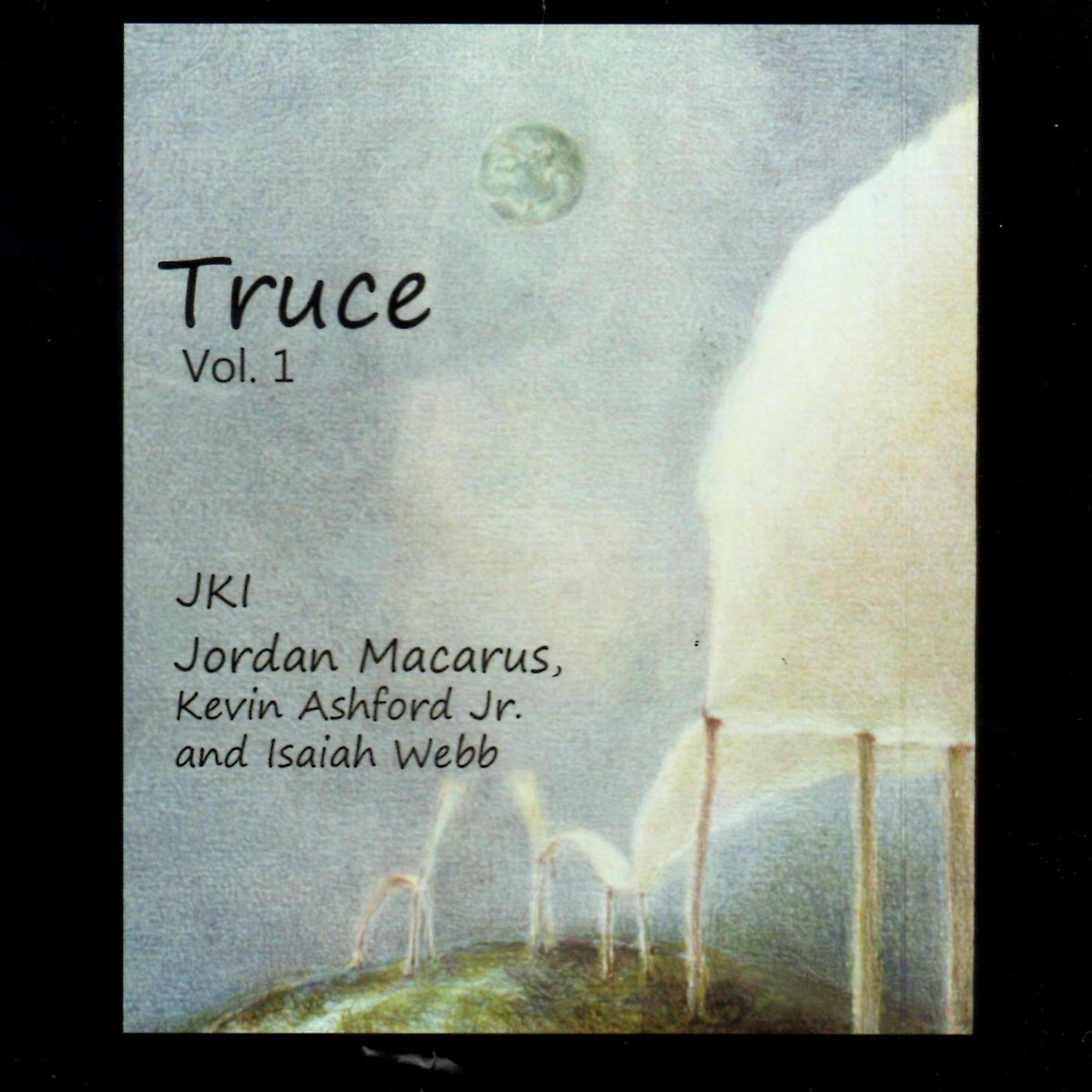
We recorded about 27 songs over two nights at a large club on a couple of Tuesday nights. There were a handful of our friends in the room, but we tended to finish up with just the musicians and a couple of working folks.
We did some really energized gigs as JKI; occasionally joined by 21st Century Winterhawk. Mostly, we had a great time working and playing together. If the timing was right for the three of us, we might just do some again in the not far off. There are so many tunes we played together. Many that haven’t been played since… And like Larry and Geoffrey; Kevin and Isaiah are a true Joy to work and play with! [15]
“Music helps to transcend language barriers”
Looking back, what was the highlight of your time in the band? Which songs are you most proud of? Where and when was your most memorable gig?
I actually feel good about most of the songs. Some that have captured very well on the recordings; some not so well, and some that haven’t been ”captured” yet.
I would love to play with a quorum of great players for several hours and hit songs from many decades. A few of my ”favorite tunes” that come to mind at this particular moment are: ’Hammer and The Axe,’ ’Larkin,’ ’Ahab’s Vengeance,’ ’Christine,’ ’Waking Hours’ and ‘Coyote’.. Those are all great songs to play live. If I think about it, many more will come to mind. It’s situational for me: Who am I playing with? What of my songs do they know, and / or really want to play? The ones I want to play at any given moment are usually the newer ones, ones that feel pertinent, some overdue to be played, and the list of my ”favorite” twenty or so that always includes those 7 above.
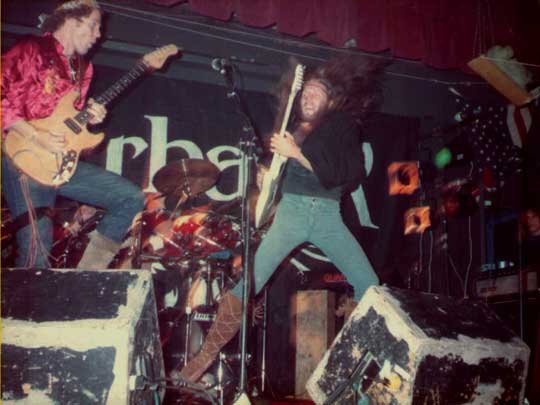
From the Pre-’Revival’ Winterhawk, one of the (many) highlights was: The first gig with Steve Tsokatos on drums. The four of us came out into the packed medium-sized room, and the audience kind of jeered and chuckled since we were all dressed in our ”concert attire”. But within minutes we could tell they felt we were for real… The biggest gig we did was opening for Jefferson Starship for about 5,000 people in Dekalb, IL. And when we opened for Average White Band at Lewis University in front of 3,000 or so; I didn’t want to hammer ’em right away, so we decided to start with ‘There and Back Again’ which made for a really cool ”contemplative” concert…
All but one or two of the shows we did Post ’Revival’ in 1982 were pretty terrific in my mind. We were firing on all cylinders. Our first and last gigs together were right on.
Two unusual gigs that year come to mind: One was self-produced: We needed to make some money to get the 2nd 1,000 ’Revival’ printed, so I rented a VFW Hall in Lemont, Illinois, and we packed the room. It was an inspired night. My younger brother Jon, opened for us, juggling and telling jokes. He was hilarious! And the energy in the room was great. At one point during ‘The Toys Come Alive at Night,’ the power went out to all the lights except one spotlight, but we kept right on going, which made the tune super dramatic; and the place went nuts. It was also the first night we could hear the audience, loud and clear, singing along with ‘Ace in the Hole’. (I remember someone coming up to me after the gig and perhaps only partly joking, saying “You guys Rocked tonight! – but your brother blew you away…!”)
Another unusual gig was about an hour set on a multi-band outdoor show at a wooded campground in Indiana. They didn’t know us, but were starting to dig what we were doing. The thought of doing the dramatics for “Toys” in a foreign place made Doug nervous, so he came over to me and wanted to skip playing it. I told him something like, ‘hang on; we’ve got’ em right where we want em’. – He might’ve said, ‘I hope you know what you’re doin’… I felt I did…
We all took a breath; I cued the band with a nod and we Froze in position. The audience then did some of that quizzical fidgeting as the ”magical” intro tape started, and a costumed Maze came across, his voice beckoning; “Good evening. I’m Bartholomew, the Toy Maker. And these are my toys. No, these are my children! – And they come alive at night…” (a short pause as the audience fidgets, and Bartholomew points at someone considering heckling) “You! You don’t believe it! – You must open your mind. Make room for the unbelievable. The more you imagine, the more you will see… Well it’s nearly dusk now and I must be going. But when the night falls, press your nose against the glass; and See if My Toys Come Alive at Night!…” (His twisted laughter echoes as he exits the stage with his walking cane, and the flutes trail off…) And we begin with the jagged quazi-melodic rhythms that enter our bodies, and ultimately become fluid, breaking through with double leads and a bass lead rocking over a driving rhythm… (Minutes later ”the sun starts to rise”). The jagged rhythms start to catch us again. We make one last melodic, anthemic ”exclamation” together, then freeze on a harmonic. (Bartholomew comes over to me and turns my head back to its pre-song position and exits), as the crowd erupts its appreciation for that adventure… And they cheer us on together for the rest of the set…
Almost every gig I’ve ever played has left me with something to remember. The most recent gigs with Geoffrey Lowe and Larry Ortega have been fantastic and span several decades of material. The Winterhawk gigs in Greece 2013 and Germany 2018 are eternal for me. In Greece, when the audience sang the double leads to ‘Hammer and the Axe’ it blew my mind, and still lifts my spirit. And at Keep it True, Germany 2018, I could see people singing the words to ’There and Back Again,’ but also ‘Larkin,’ a song they could only have known from videos from Greece. That will stay with me forever as well. [16]
What are some of the most important players that influenced your own style and what in particular did they employ in their playing that you liked?
Nick Brown for teaching me scales and the concept of playing one note a thousand different ways, Ted Nugent for his raw power and soaring guitar, my sisters, Jimmy Page for doing it all, Richie Blackmore for a lot, and also emphasizing leaning on one note many different ways… Later Jeff Beck for his amazing nuances, whammy bar harmonics, melodies and ground breaking. And enormous respect and amazement for the sounds, and what Jimi Hendrix could do without any pedals atoll… I watched many players live, mostly while working, and some fairly close up, and there is something to be learned from any and every guitar player. Eric Johnson for his fluid arpeggios, Yngwie Malmsteen, Stevie Ray Vaughan (‘The Natural’), Randy Rhoads, Alan Holdsworth, Steve Howe, Stevie Vai, Satriani, John McLaughlin, Billy Gibbons and many others including Frank Zappa.
Yet another story. By an interesting set of coincidences, I got a call to help the stagehands load in Frank Zappa’s gear and set the stage for a 1981 concert in Dekalb. After we were done setting up, I sat down and was lucky enough to watch the rehearsal (also with Steve Vai on guitar). Probably the best music lesson of my life. What I learned from Frank Zappa was that if you commit yourself to trying something, anything is possible. He and his band tried a couple things at rehearsal, and put them in the show that night. I think I stayed up all night and wrote the ‘Toys Come Alive at Night’ after Frank’s load out…
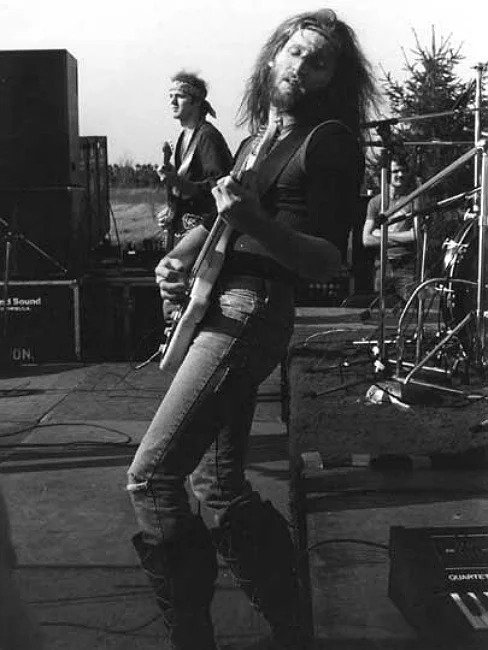
Thank you for taking your time. Last word is yours.
“Appreciate your questions, and all that you do to keep musical spirit alive!”
(Music and the writing of it has almost always been therapeutic for me, and as such is an essential part of my “sanity clause,” and the search for deeper meaning and the multi-dimensional nature of the everything..)
Will see what the future holds, but I hope to produce and release some more tunes before I’m done on this plane. Playing live is still one of my favorite things to do. Every player and every listener is in concert together weaving the multi-dimensional reality of those moments into a stream that flows into the forever…
Earth is an amazing and wondrous place. The thin biosphere we are lucky enough to live in, may be the only sliver within at least twenty trillion miles where we can breathe without a spacesuit. Life itself is amazing; and preserving the wild plants and animals; the innocent creatures, seems essential to the healthy sane survival of us humans.
Music helps to transcend language barriers. Sound and music may be keys to merging and bridging beyond the four dimensions that we perceive. To the experiences that are eternal…
In the words of Frank Zappa; “Love is not music. Music is THE BEST.”
Klemen Breznikar
Footnote
[1] Without Christine Tobias, Chris Mazur, Nick and Steve Brown, Dennis Bergeron, Phil Baker, Jim and Teri Zahurones, Henry Myers, Scabe, McCleod, Malcolm, Peck, Rick and all the Winterhawk members, several of my bosses’, Parents, siblings, and many other great friends, you probably wouldn’t be interviewing me while I was alive…
[2] Our driveway is very steep, and our winters are constant oscillations now between thawing and freezing. Ten years ago, it was extremely rare to have any rain at this longitude and latitude between December 1st and March 1st. Now, it rains as much or more than it snows, and we have to be prepared for that rain to freeze on the driveway incline at any time. Our old workhorse van spends much of the winter down by the (busy) road. There’s a 50-meter rope line to get down there if / when needed. – When I’m shoveling snow down there, I salute the big snow plow drivers clearing the road. Partly because “we’re all in this together” and I appreciate what they’re doing; but also hoping they’ll go as easy as they can leaving those big heavy mounds at the end of the driveway…
[3] The book really started in 1987, when I proposed an experiment to two colleges back in 1987 to: “Model the Planet as a Cell; to observe the Impact of Economics and Human Expansion on the Environment.” They didn’t know what to do with that at that time, so I wound my way back to the working world and did my own observations.
[4] My first guitar teacher was a guy around 19 yrs old who rented us a guitar, and I don’t remember anything specific at all about that. The second was an older man, Mr. Cenetiempo (sp) – I think he was probably a great immigrant musician or professional of some sort. He was soooo bored though, teaching some young kid to play the likes of ‘Mary had a Little Lamb’ that he would spend the entire half hour flipping a pencil into his shoe; the space between his ankle and his shoe. He never missed…
[5] Since high school, I’ve also been playing, mostly covers, nearly once a year for fun with some combination of Chris Mazur, Tim Lloyd, Larry Granat, Malcolm Williamson and Erik Tomaskovic. When we gigged we called ourselves, “Underdog,” “Haphazard Repair,” “Neighbor’s Complaint,” and one or two other monikers.
[6A] My dad had always told us kids that ‘we could do anything we put our minds to.’ – Which was certainly a great thing to hear. – Though, when I was eighteen, and sat down to tell him I had dropped out of community college to try to pursue music as a career and was working on a big gig; that was apparently one of the things he hoped I wouldn’t pursue at that time.
We didn’t fight about it or anything; he just said he didn’t know anything about that, but that very few people make it in that business’. It was hard for him to feel good about his oldest son choosing that path, and neither one of us really knew how to talk about it. So, we sort of drifted apart for a while. Ultimately it was part of the evolution of both of us. We both had demons to battle, and ultimately influenced each other. I initiated another talk when I was thirty, and we had a heart to heart that was important and emotional for both of us. And before he took his unexpected journey into the beyond; I was fortunate enough to thank him ‘for all he had worked through, and for the altitude, atop his shoulders, he gave me to see the world from’…
[6B] David Petrulis Macarus was an extremely brilliant and honest man who became wiser, funnier and better like a good wine aging with integrity… I have him to thank for nudging me towards getting a physics degree when I was a bit adrift, and still helping to support my musical endeavors… Many people that know me now, think of me as a ‘scientist’, as well as a passionate musician / artist. And a few just think I’m crazy…
Math had always come easy to me, and I played some junior football, and was on a swim team from age 6 to 10, till we moved from Philadelphia. When we moved, our family didn’t join a local swim club, so I kind of just let that go. Dad had been offered a high-level position in Allentown, Pennsylvania for the big chemical company he was working for. When we were preparing to move from Philadelphia, I thought that’s where we were going. But my Great Uncle Laurent (who I never knew) had left his incense business to my father’s cousins. The company was leaderless and possibly failing, and they asked my dad if he could come and put it back on its feet. (Some of this I knew or would learn later) He was excited about the challenge to run the whole company, and the chemistry involved. He worked about 72 hours a week for the whole first year, righted that ship, ran it for many years, and handed it over to his cousins before moving on to two other careers…(Another story about money, control, and resilience…)
[7A] I started doing part time Concert Security and Crowd Management in 1977: Whenever I’d get to see someone like Satriani, Eric Johnson,Jeff Beck, Stevie Ray, Adrian Belew, et cetera, I’d try to take away at least one lesson from each.
[7B] Worked well over 700 shows during what evolved into a full time job from 1990 through Woodstock 94’, where I was the lead crowd management supervisor for the main stage crowd area. ‘This Song is Not Over’ from ‘The Passage’ CD chronicles our Woodstock 94 experience; which ended in near disaster for our crew. At the Pennsylvania-Ohio border, a pile-up accident with trucks and buses sent 40 of our crew of 125 to six different hospitals, on our way back to Chicago from New York… (There is certainly a book’s worth of dramatic, “heroic,” and humorous, character-filled stories over my 19 years working on that side of live music…)
[8] The fundamental misconception from Rich Mezger’s bringing me and Doug Brown together was perhaps the ultimate double-edged sword for us. Without it, we might never have met. (Doug’s voice and capabilities were immediately and perpetually inspiring to me as a budding writer.) But Doug must have felt enormous animosity for me when he ‘came to audition me’, and I ‘appeared’ extremely audacious by running that audition from note one. And since neither of us knew of that misconception / deception, it must have grown a subconscious life of its own for Doug; likely driving his two exits from the band. There’s no point in blaming or lamenting. A Lot of bands breakup from some fundamental misunderstandings. “Trying to do the best we can, learning and carrying on always matters…”
[9] We customized the ’65 Strat before the market exploded on old Fenders. I bought it for $175 and put about $350 into the pickups, wiring, and paint job around 1977.)
[10] I think we were planning on playing ‘There and Back Again’ in the ‘Revival’ sessions, but that could be “a thought echo” from an earlier recording session. If so, likely the one that ‘Too Much o’ Nuthin’ came from…
[11] In the spring of 1985, without any knowledge of where the thought was coming from; I paused just as I was leaving a college rooming house for spring break, picked up the phone, called my landlord and asked him; “What would it be if I got a dog?” He said, “just add a $50 non refundable security deposit.” When I got back to my hometown, a wild dog that was between fifty and a hundred percent coyote was hanging around a friend’s trailer house on the edge of the woods looking for someone like me. “Nastasha” (or “Stash”) and I bonded almost instantaneously. She was the smartest dog I ever knew. We spent as much time as we could in big fields, by rivers and in the woods. She was an amazing hunter of rabbits, woodchucks, squirrels, mice, and at least one deer. When she had a litter of six pups she regurgitated at least one rabbit for them.
Over the 13 years we spent together, there were less than ten people she was truly comfortable with (and vice versa). There are countless stories and life lessons over that time. And when I had to take a plant biology course to finish my physics degree, I “realized” how absolutely essential wild plants and animals are to the healthy, sane survival of the human species. That’s influenced my life and my writings ever since…
[12] Christine and I are soul mates and partners. She has done most of the pictures, graphics, CD covers, computer work, and co-produced the audio on several of the projects. Her ears are impeccable. She bought me a pair of roller blades for one of our first dates, and we have skated, cross country skied, hiked, camped and “adventures”… Helped to raise our kids Zach and Rose and the dogs, cats, and reptiles, together…
[13] Using extension cords and about 100 feet of mic cable I recorded cicadas from the woods at the back of the property. That same year my landlord’s daughter and I “rescued” 6 baby raccoons who had fallen down the wall from apparently being born in the attic. She bottle-fed them and I recorded them before they were successfully delivered to a wildlife rescue facility.
Ps. I called my recording studio, “Raccoon and Coyote Studios”, not because of those raccoons, rather my coyote, Nastasha, who lived there the whole time, and a different baby raccoon, ICY (for Infinite Curiosity) who Stash and I raised together, and released successfully into a large forest preserve, actually closer to where we live now. (Stories within stories within…)
[14A] Suddenly the smell of smoke was overwhelming. I thought our 2-flat apartment building was on fire. So, I ran out the front door, and through a grey-black vortex of smoke, saw one of our neighbors burning something… They were getting ready to move out quickly for a job in another state, and she didn’t have a document shredder; so mama was burning her important papers and files in a little round grill. It was like putting big phonebooks right onto a fire. There was no air between the pages so it was smoking like crazy!
We all got along in that neighborhood, but we didn’t really know each other’s names. (I had started my gardening / farming experiment outside our apartment, and gave the neighbors my extra tomatoes when I had them.) Anyway, I was kind of laughing, and told her I thought the buildings were on fire; and then helped her and showed her how, by separating the pages enough, we can actually burn it all much quicker, and not have somebody call the fire department, or the police… So we talked and laughed for a while as she got the hang of it. She mentioned she had a guitar that none of them played, and said she might leave it for me.
I didn’t see them leave, but they were gone within two days; and there was a little acoustic guitar left on our porch. The tension from the metal strings was gonna rip that cheap little thing apart. So, I brought it to my father in-law [14B] who cleaned it up and put nylon strings on it. It only weighed a couple pounds and it became my partner at the end of a day. It was quiet enough so I could sit on the steps or walk around outside playing it without notice. I used it on ‘Joel Peter’ and ‘Angus’ on ‘Heart of the Matter,’ and that’s what I’m playing in the video for ‘Joel Peter’.
[14B] My father in-law, Ken Tobias, started Tobias Music about 45 years ago. They were focused primarily on acoustic instruments; but still for electric players, a great place to get some used gear, buy strings and have Ken set up your guitar (for free) while you were waiting. About 2 decades before I even met his daughter, I had sent him a Christmas card thanking him for making the area better for all the local musicians. Kind of convenient now to be married to a music-store family. I’ve got five brothers-in-law, and they’re all unique characters…
[15] I met Kevin Ashford Jr. one day when I just happened to be substitute teaching for a band / orchestra at Bolingbrook High School. (I subbed a lot, but rarely for music…) Their instructor had just given them a “study hall day”; but one of the kids knew me from playing in the band ‘Rewired’ with a friend of their fathers; so he got me a guitar, played bass, and we played for an hour or so with two different drummers. They were both great! One was a real solid groove drummer; and Kevin was beyond extraordinary. At the end of the period I said to him, “people must tell you all the time, that your chops are amazing; but you are out of control… If you get that stuff under control, you can write your own ticket anywhere.” He said he knew that he was kind of A.D.D…
Several years later I was playing along with John Veriga’s ‘Eclecticville Orchestra’ at a house party in Bolingbrook. There were several guitar players, so I was just kind of leaning back in a chair listening and adding some subtle nuances. And then a young black kid sat in on drums and started very mellow with his head down like he was shy. Then he started grooving a little more, and as he looked up we recognized each other at the same moment. We talked afterwards, and I got his number, and called him when I found an opportunity to do some kind of playing somewhere. (I don’t remember where) He and I started to work on newer and older tunes that I had in mind. And we did a few pick-up gigs. Then he introduced me to Isaiah, who was three years younger than Kevin. We rehearsed a few times where I was living at Mugwump in Naperville, Illinois. They were an amazing duo; and we did a lot as a trio while we were together.
Over these many years, Christine and I have gotten a lot done: but I’ve definitely made some bad or slow decisions in production of many of the records. My original plan for ‘Truce Vol 1’ was to get the multitracks from the live sessions over to Dr Caw and finish it up there. In hindsight I certainly should’ve stuck with the plan. I bought into the Live engineer’s plan to finish it at his studio, which took a long time, and we still had to remix the drums and stem tracks at Craig’s to make it sound “natural enough” for me. The time, and my energy that it took to finish that kind of burnt us out a bit. So, we all wanted to shift some gears…
Looking back on that period, (just like the period with Doug and I); we should have brought in a counselor / mediator so that we could keep the band(s) rolling as their own thing, while still doing our other gigs and solo or writing projects. It was time to re-evaluate what we were doing, especially after the CD took so much time to finish. (No fault of Kevin’s or Isaiah’s). I’m actually older than Kevin’s father so that may have been an issue as well. But we left it on decent terms. If the time is right, JKI might do a gig sometime in the not far off. And those two are so good, we could make a set list, and gig without a rehearsal…
[16] If we could live some of it over again; I know I’d spend more time playing in Europe. It felt like a second home, even though it was less than six days altogether. Manolis Karazeris brought us to Athens in 2013; and he made a point to give us a feel for an authentic Greek experience with the food and the gatherings the first and last nights we were there. And everyone at Keep it True, 2018 in Germany was fantastic! (Including Seb Overton from England who’s singing and stage presence was terrific, with no rehearsal) Like Athens, the bands and the whole experience was eternal… (That was actually the first time in five months I had played standing on both feet for an hour, due to ankle surgery for torn ligaments in my right ankle. I mostly pivoted on my left foot. Took my knee-high walking boot off and left it by the side of the stage till we were done.)
But all I have to do is close my eyes and I can feel the energy and see audience members singing along with us as we’re singing along with them…
Jordan Macarus Official Website / Facebook / Instagram / Twitter / Bandcamp / YouTube

